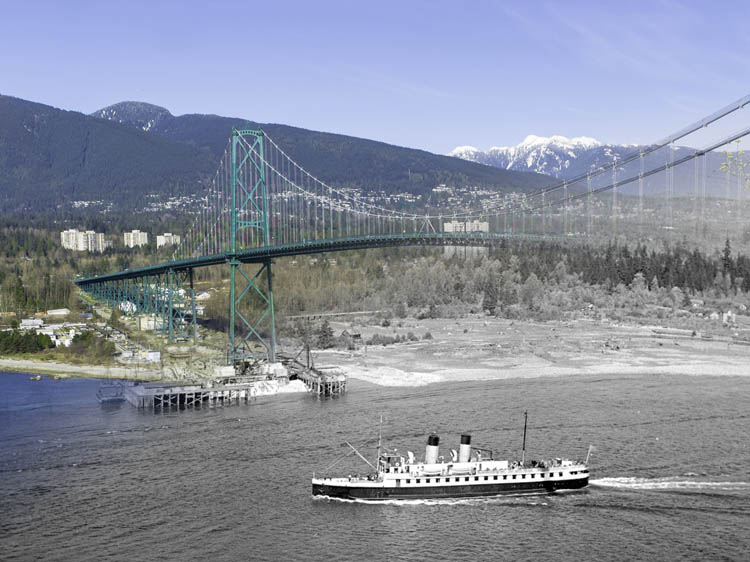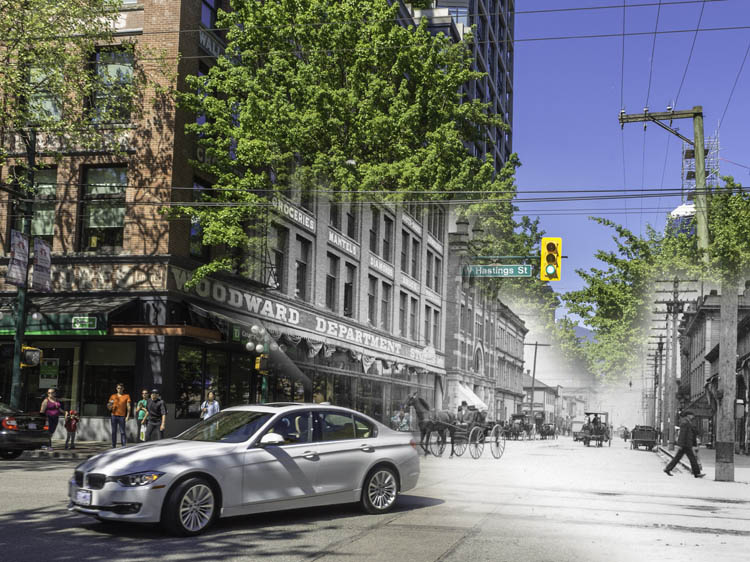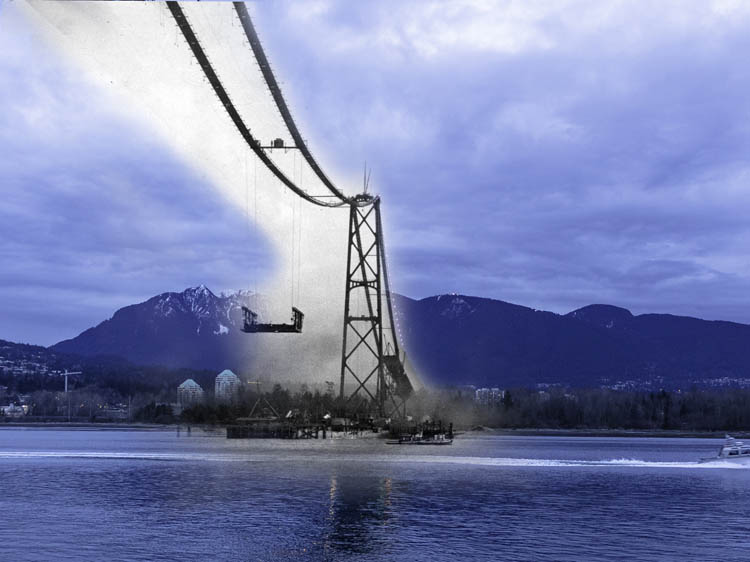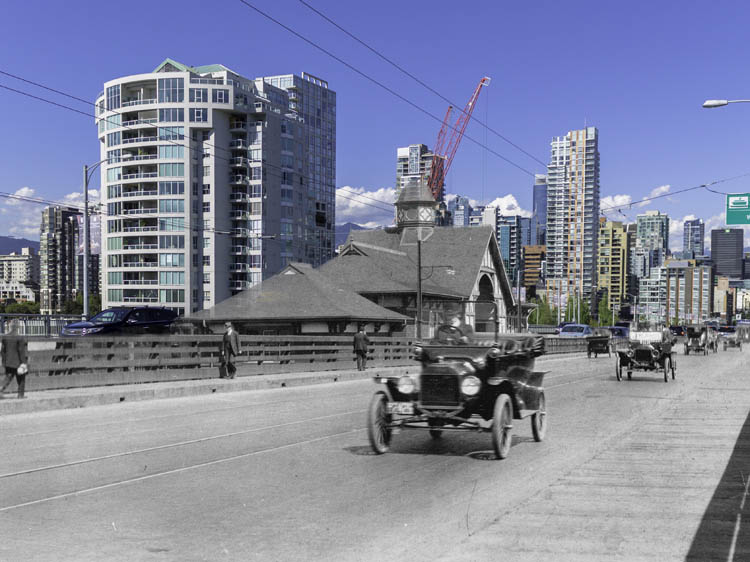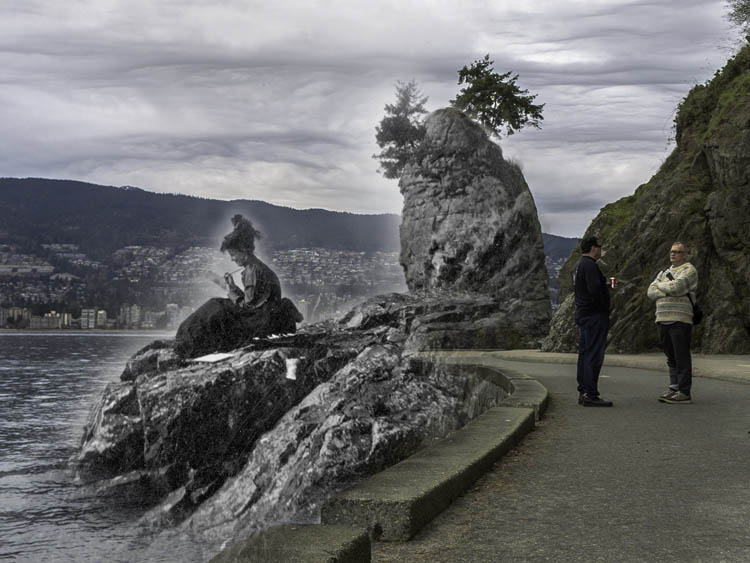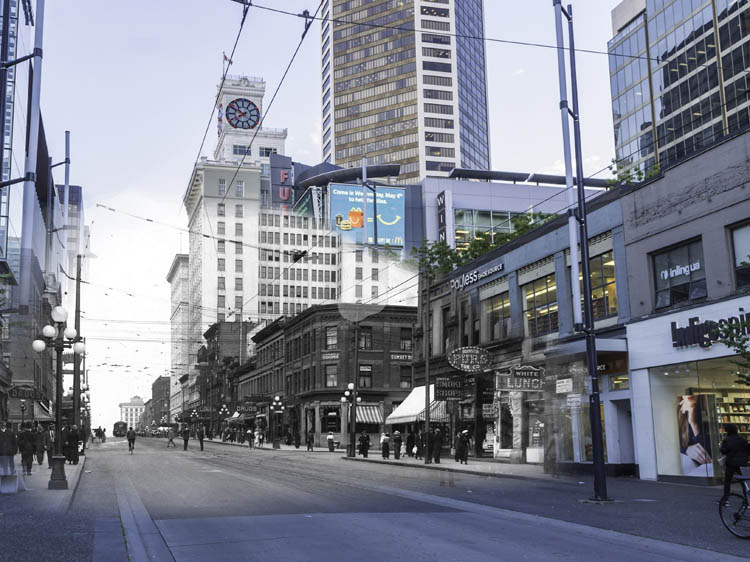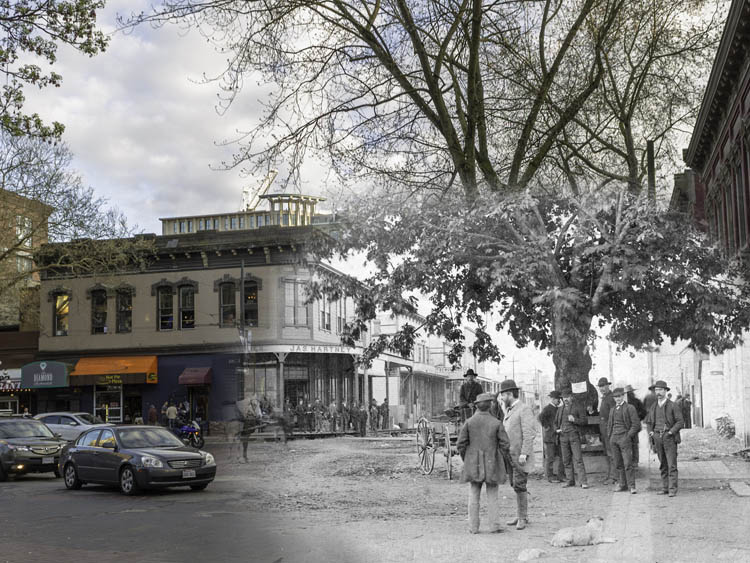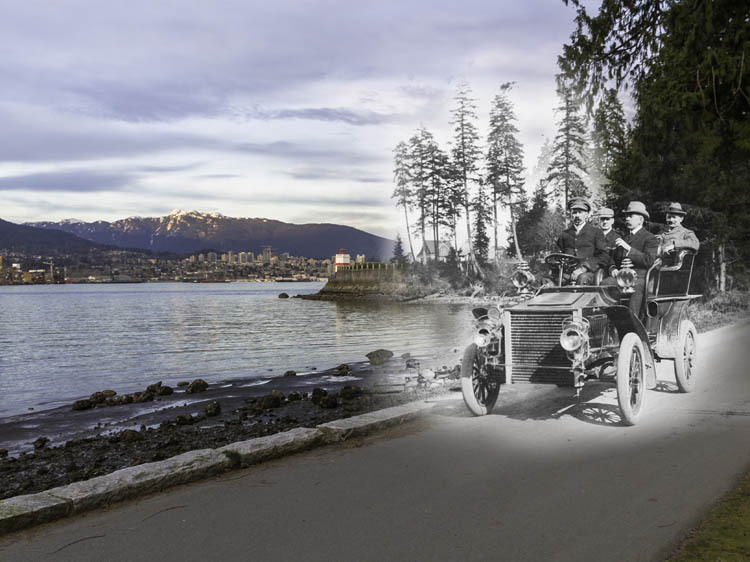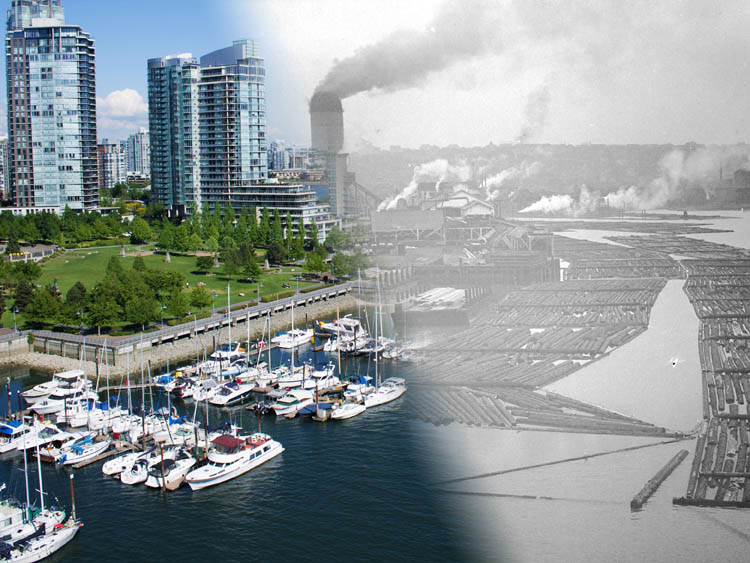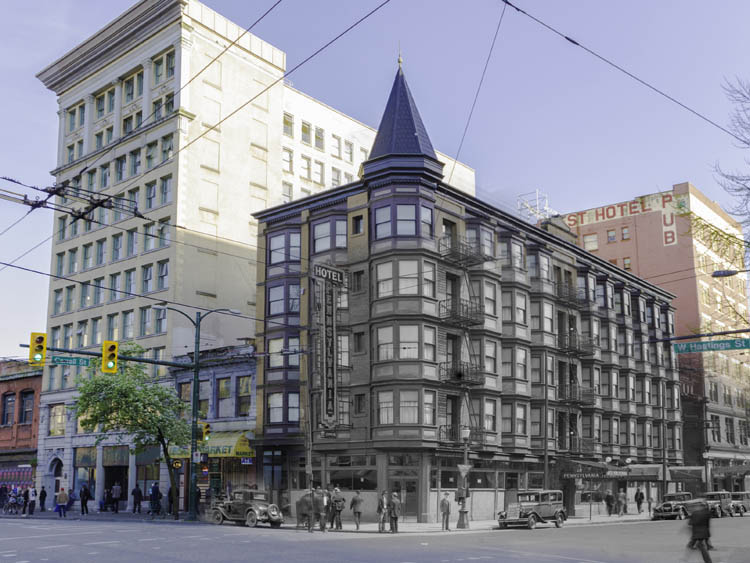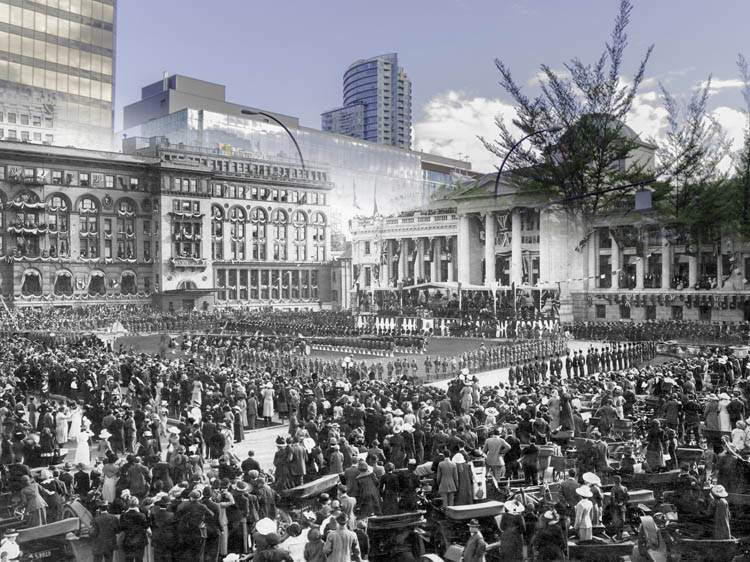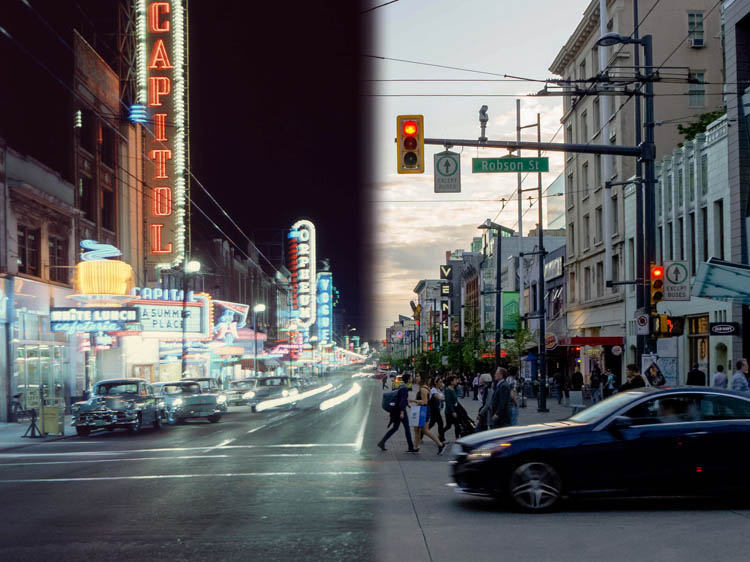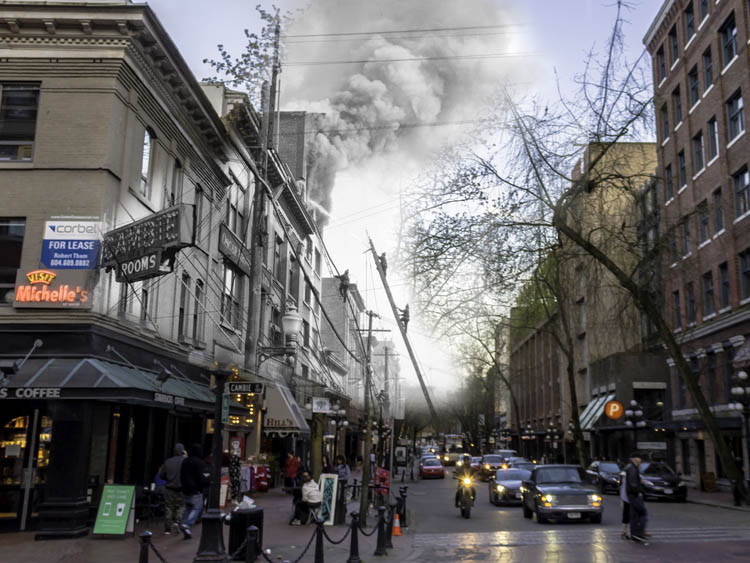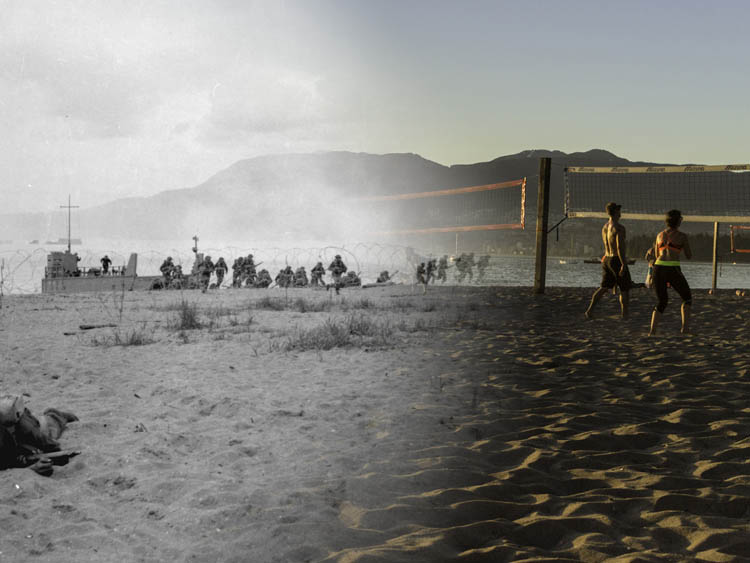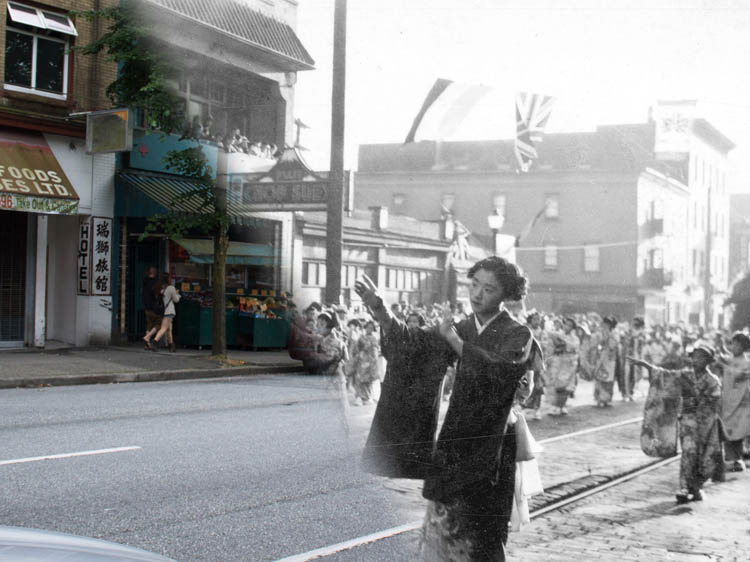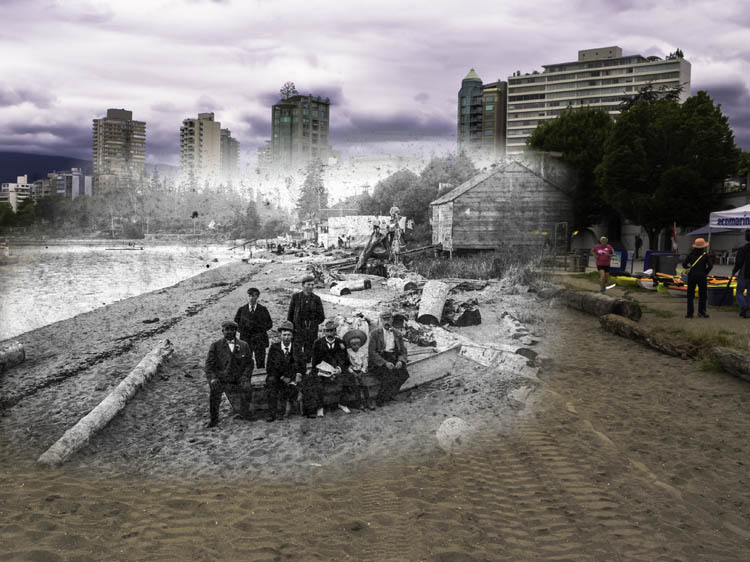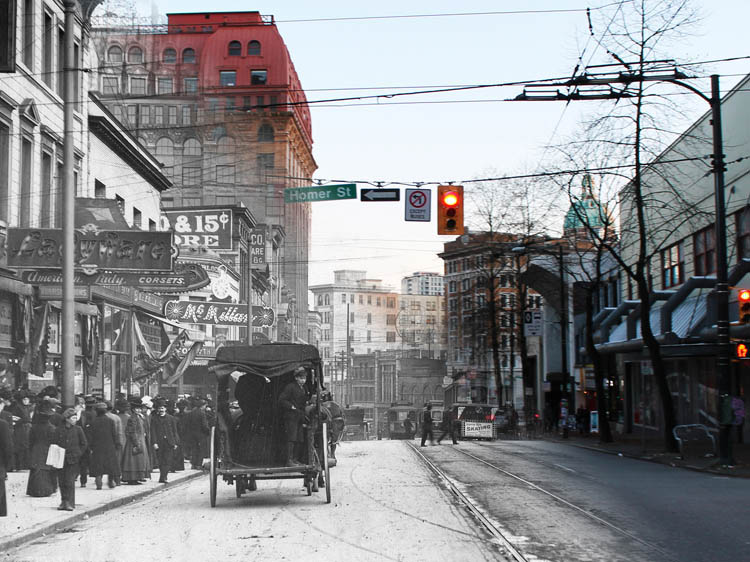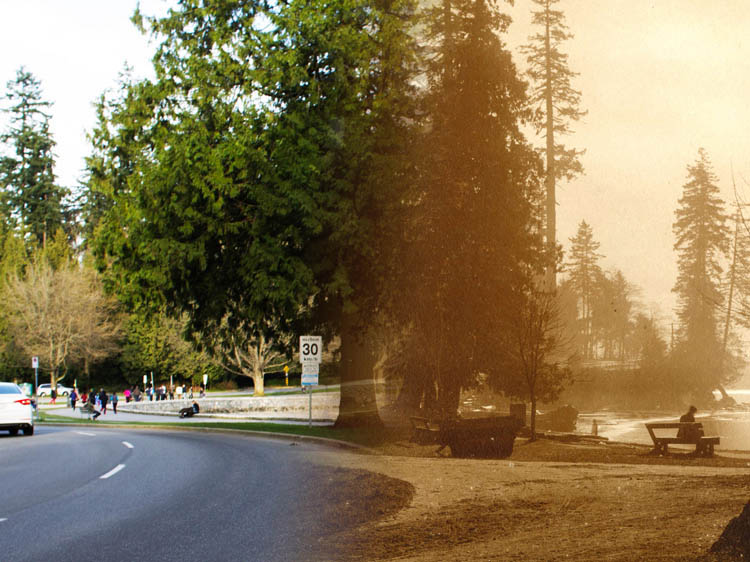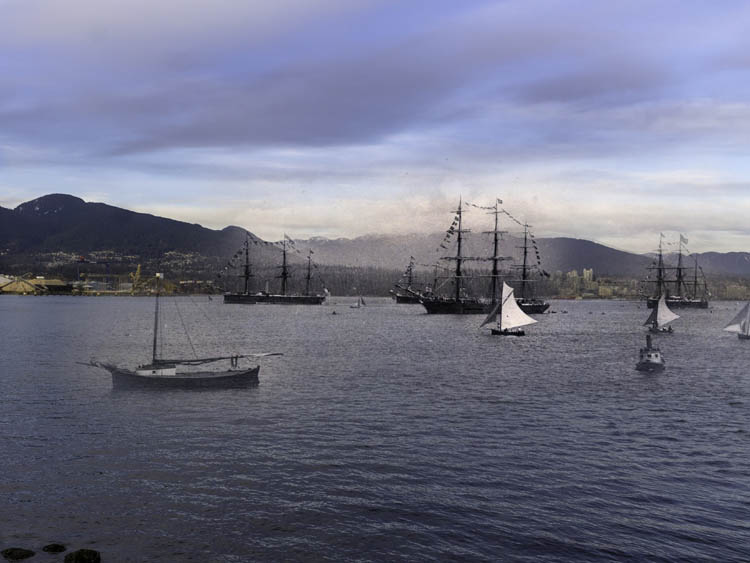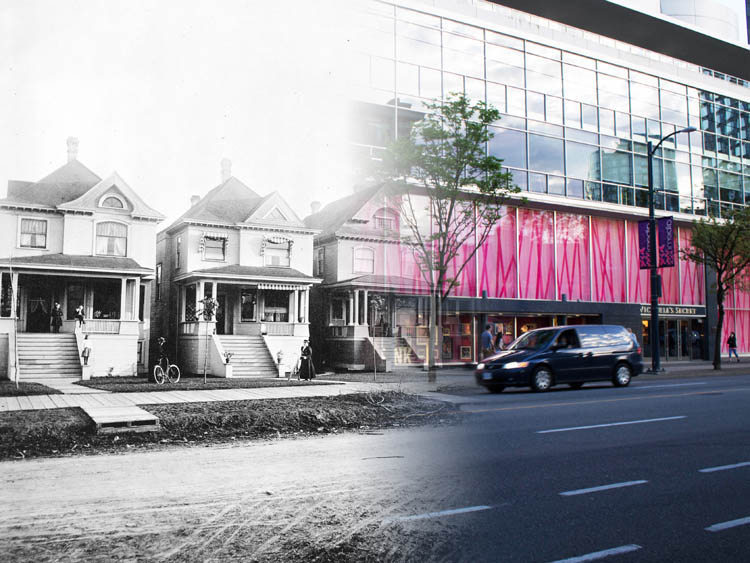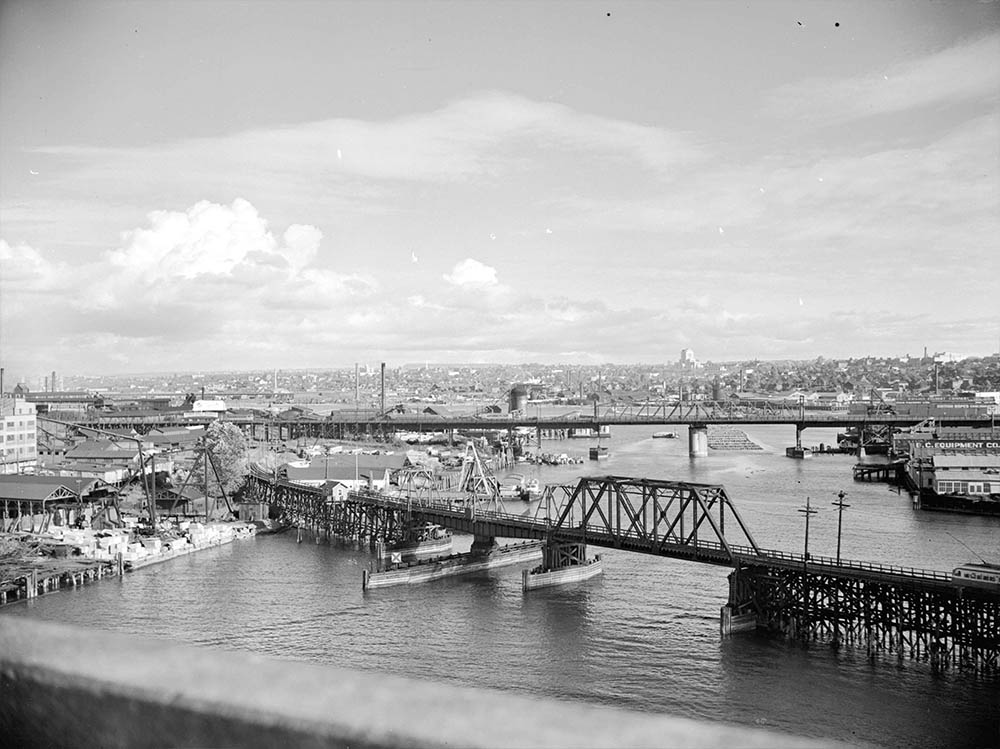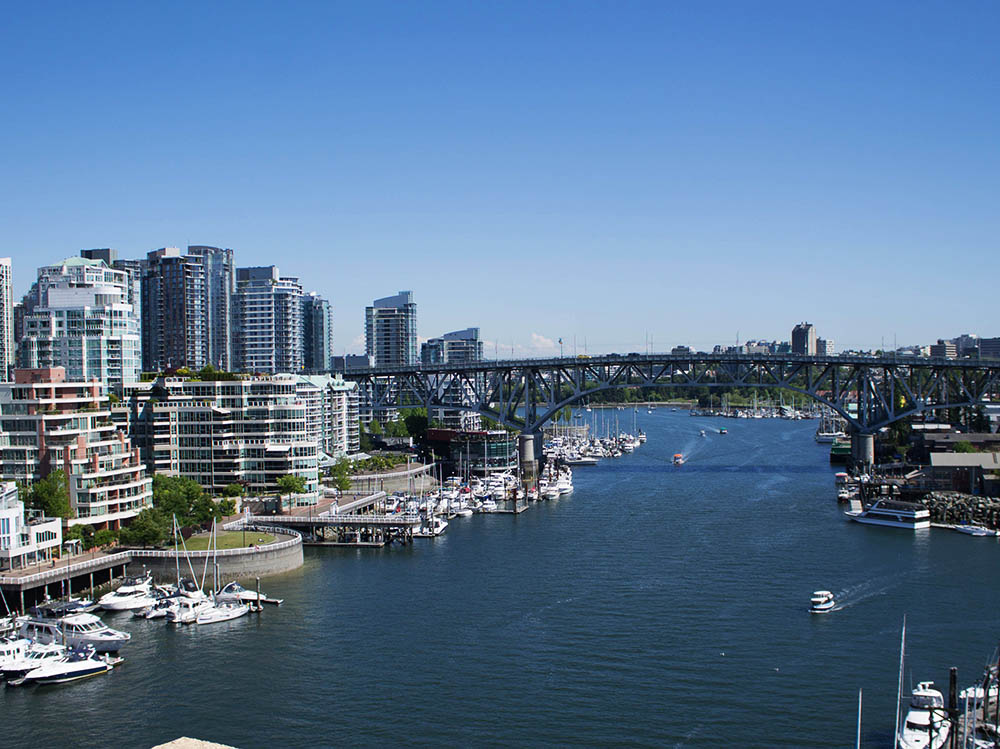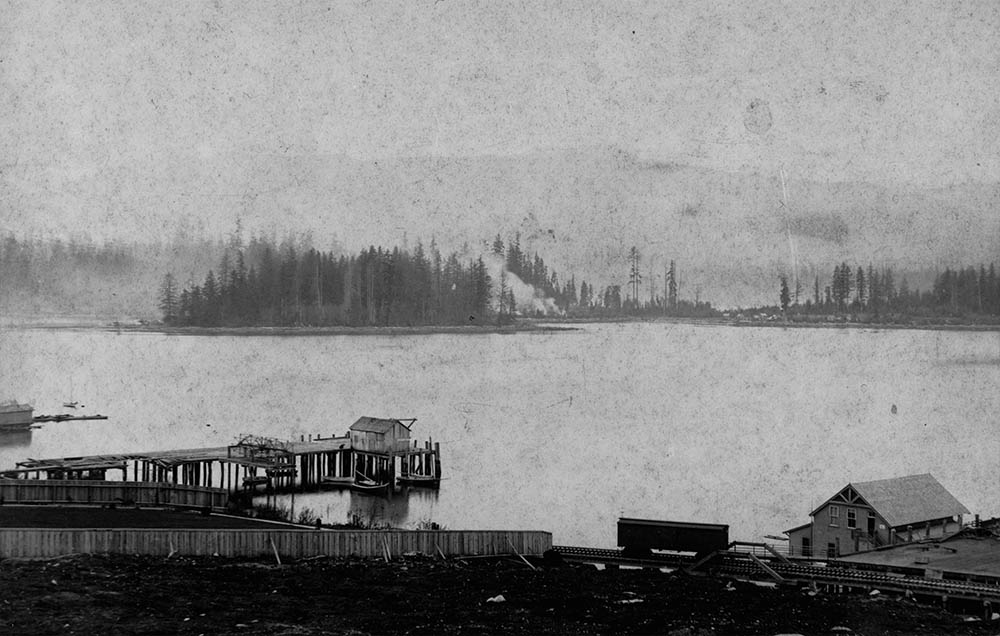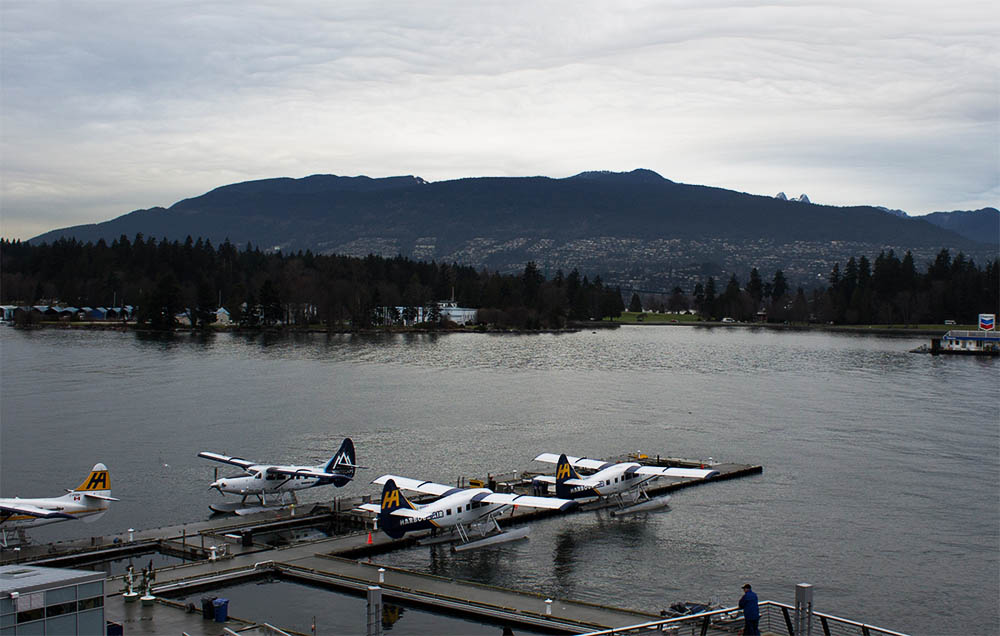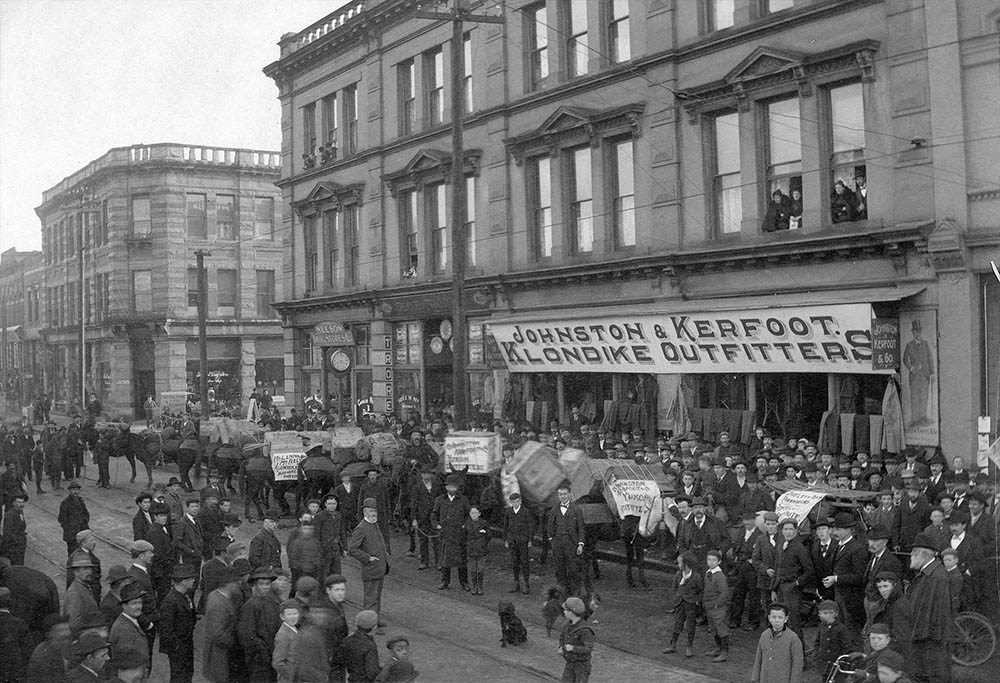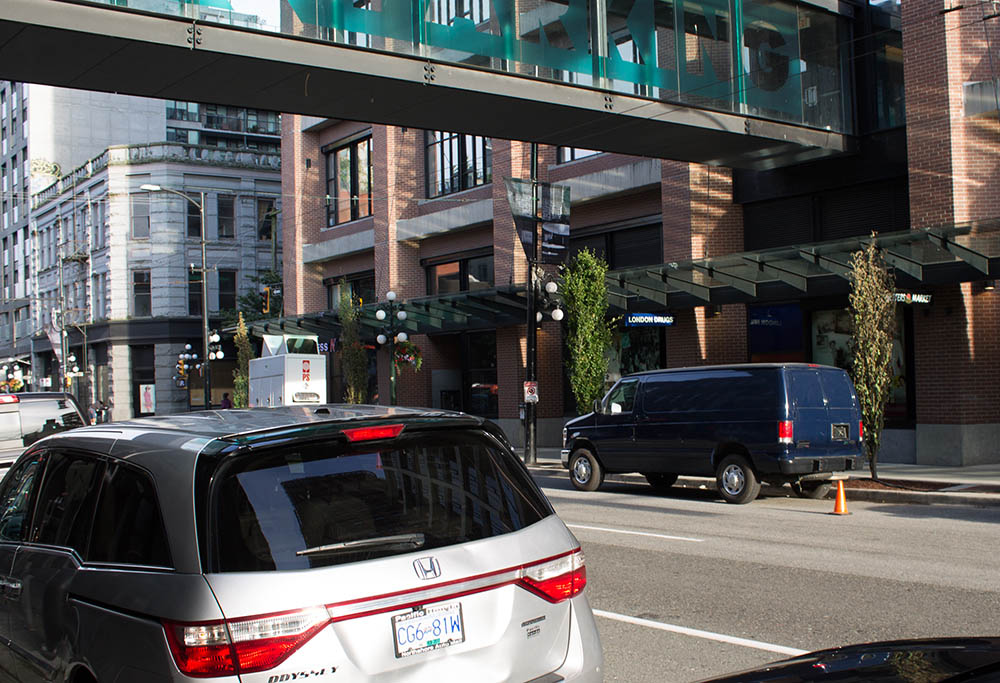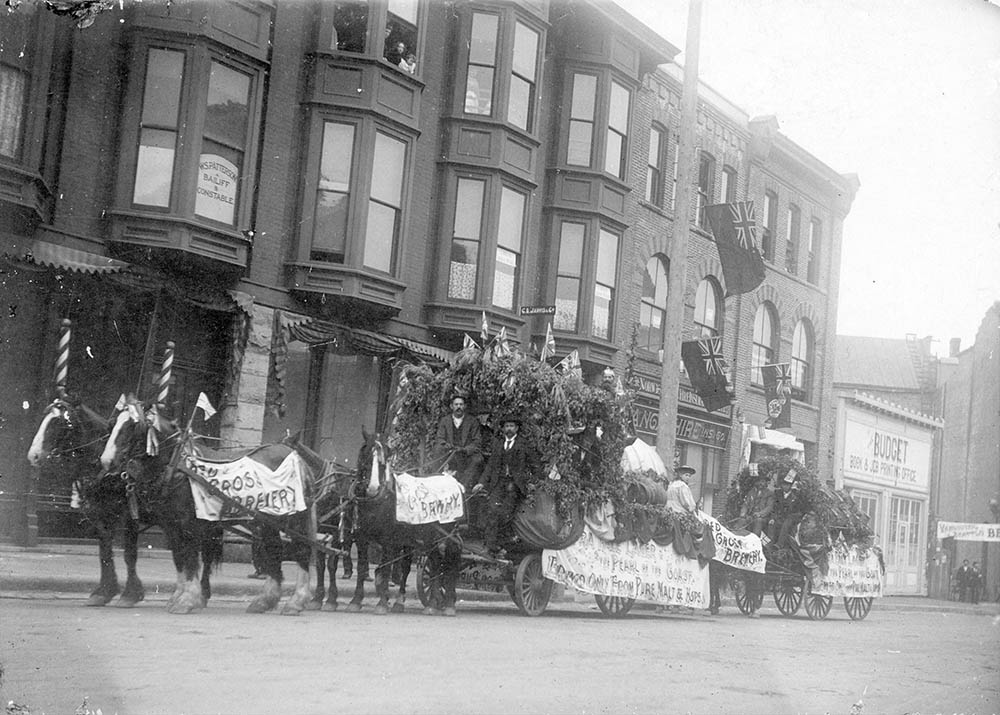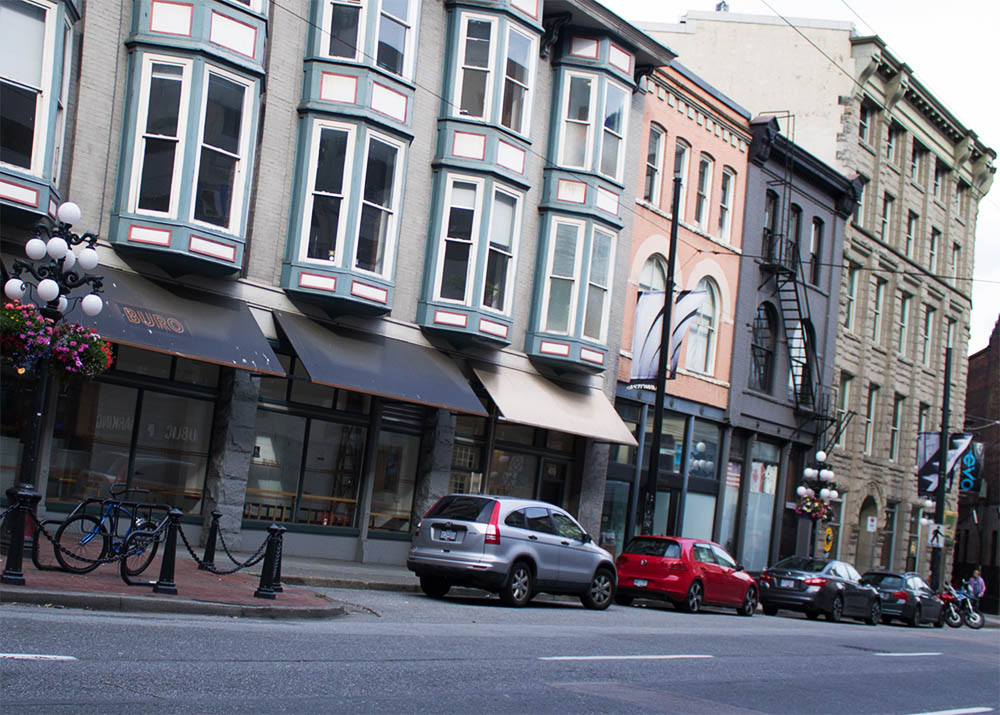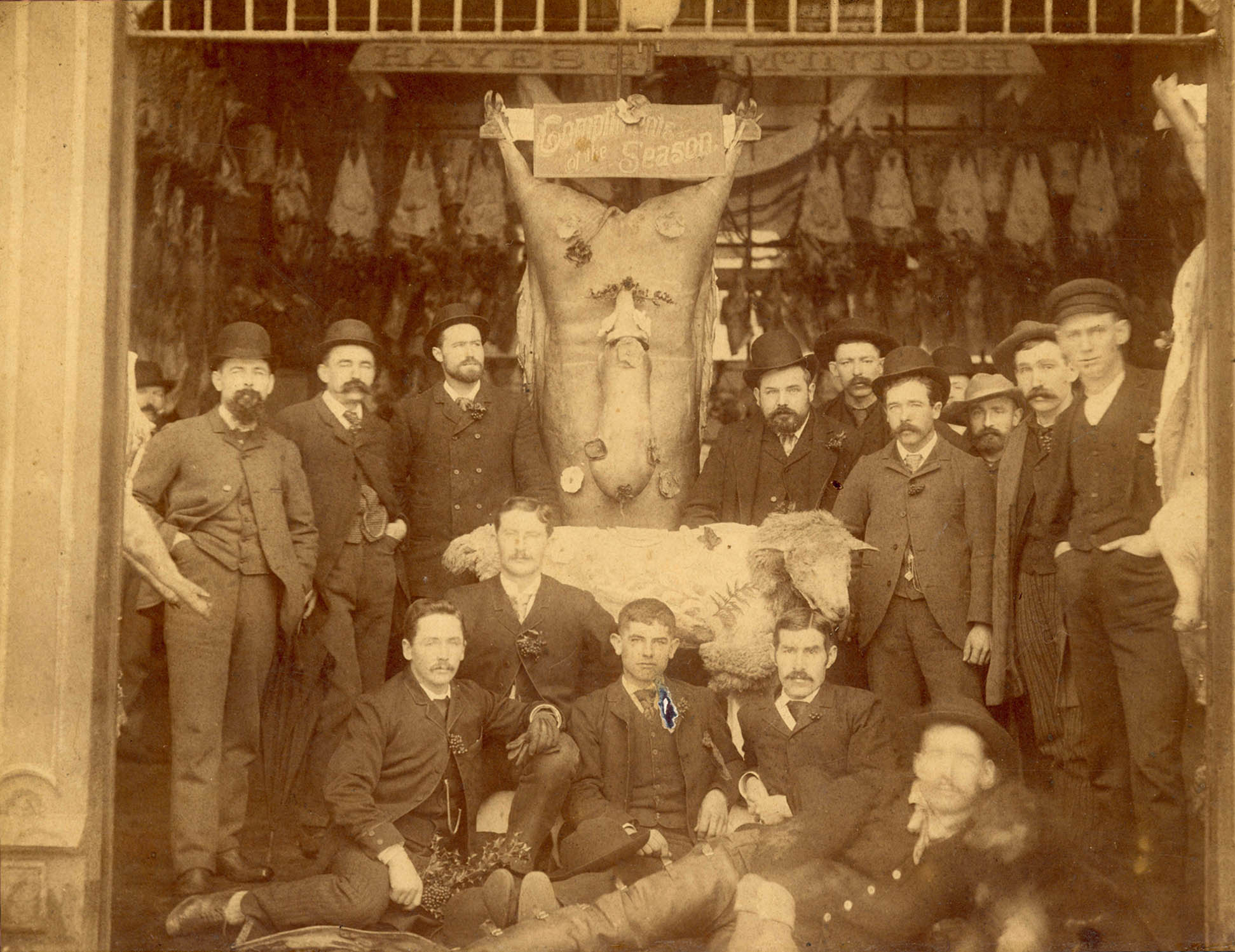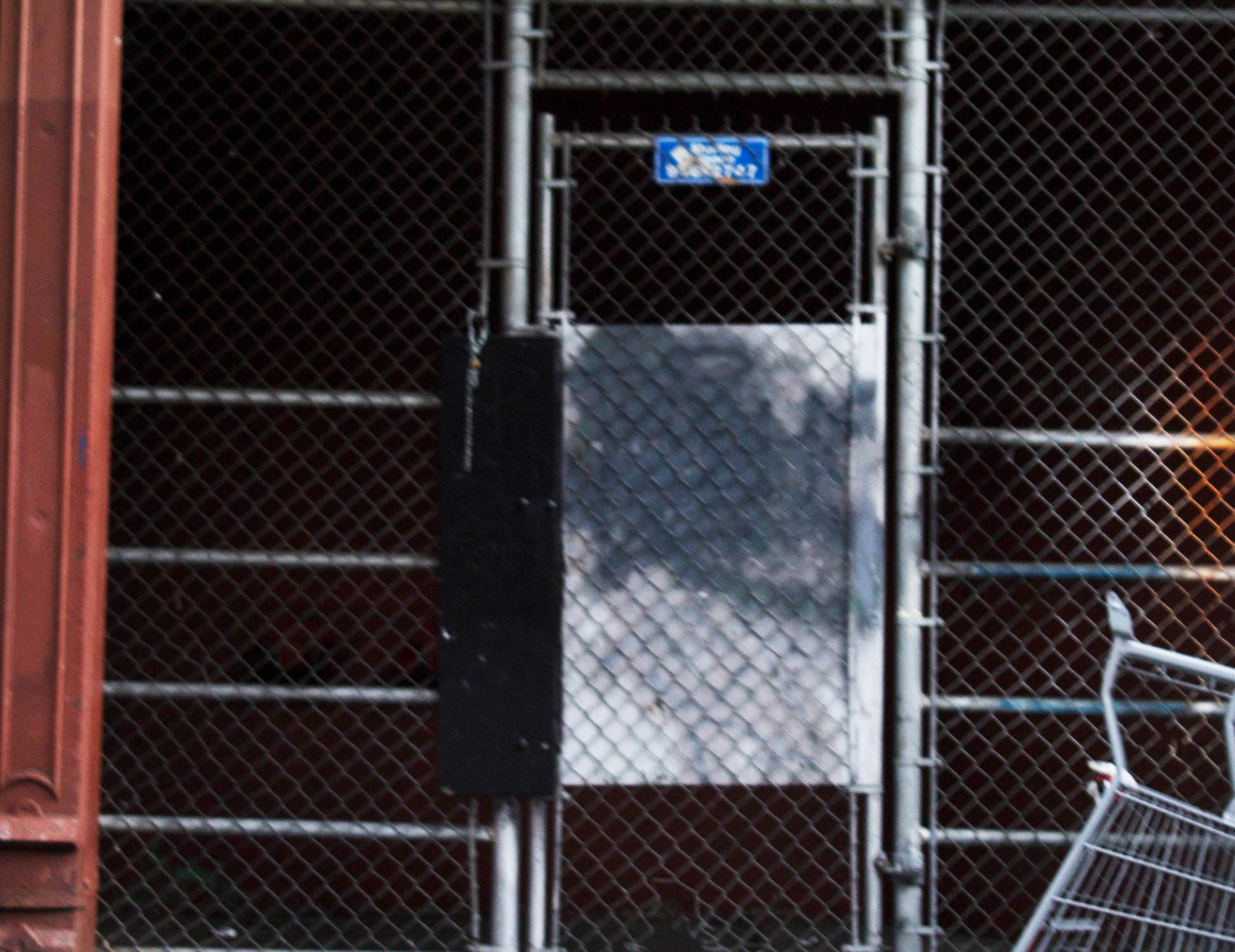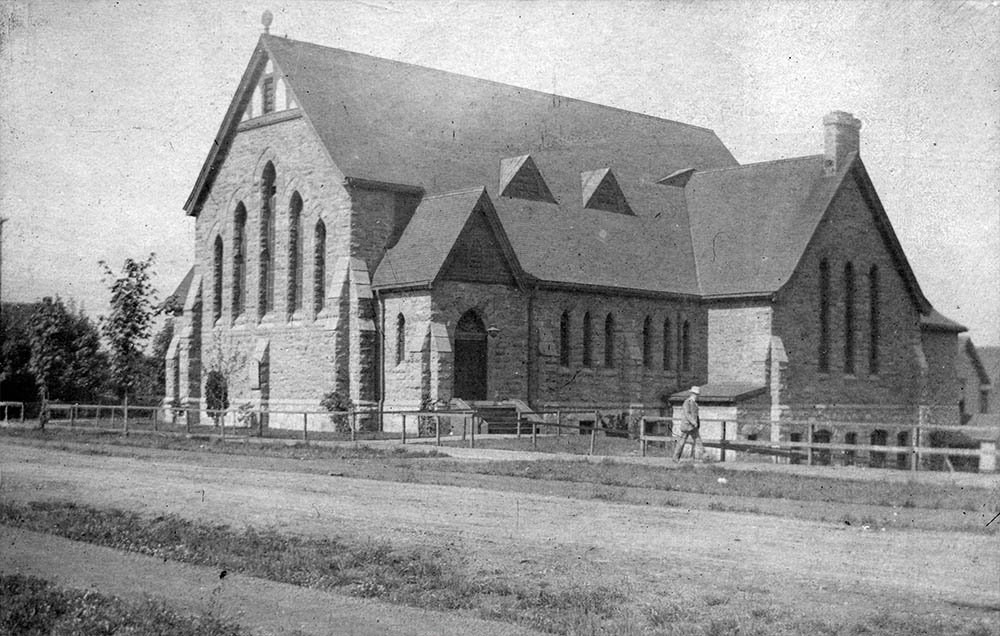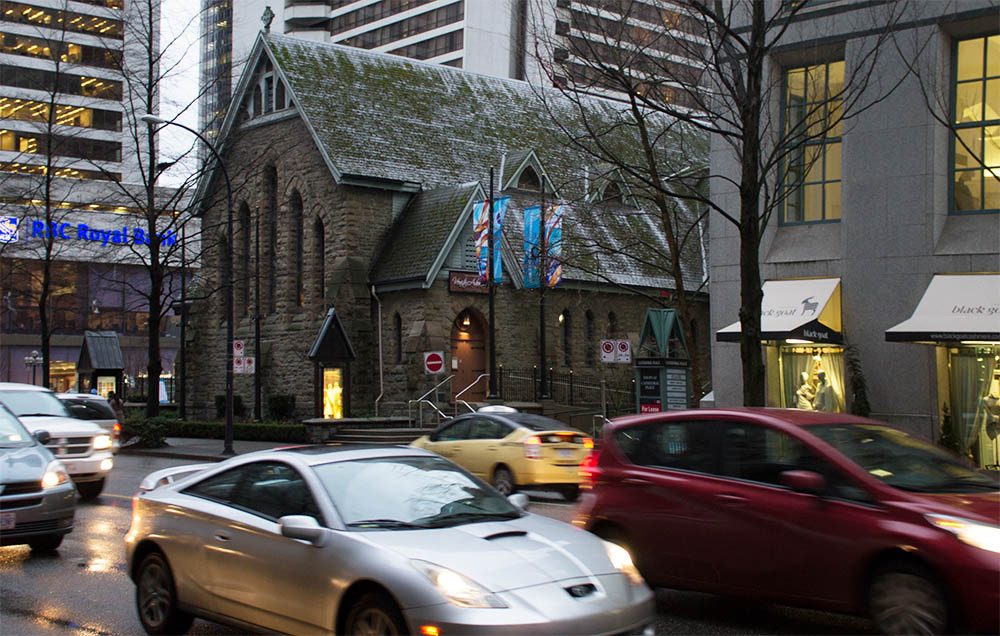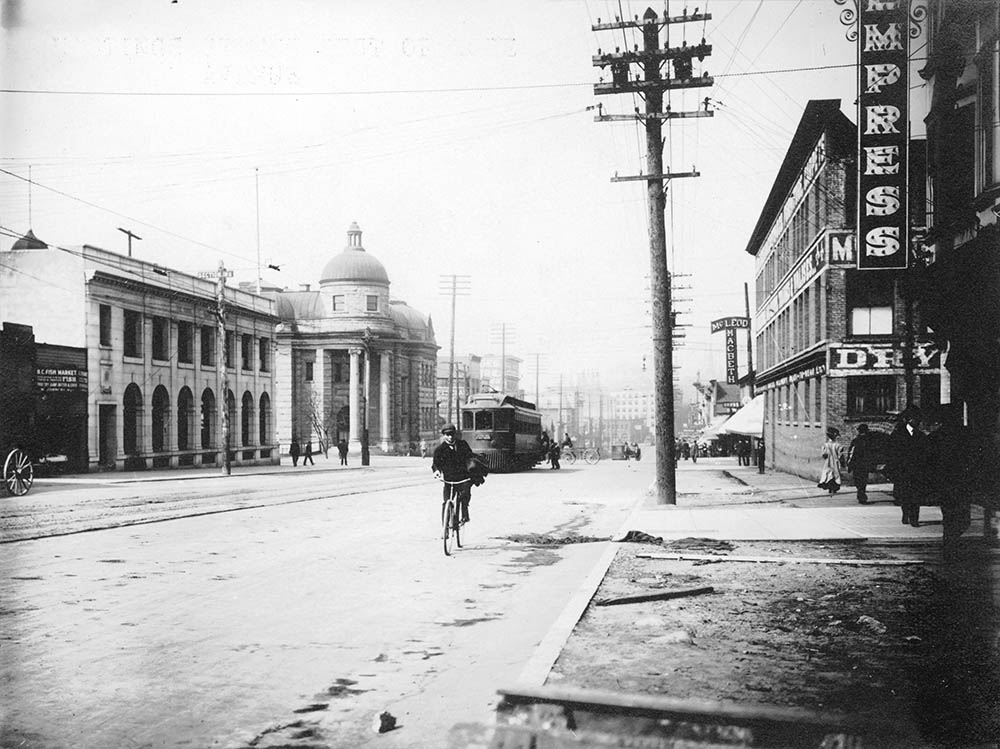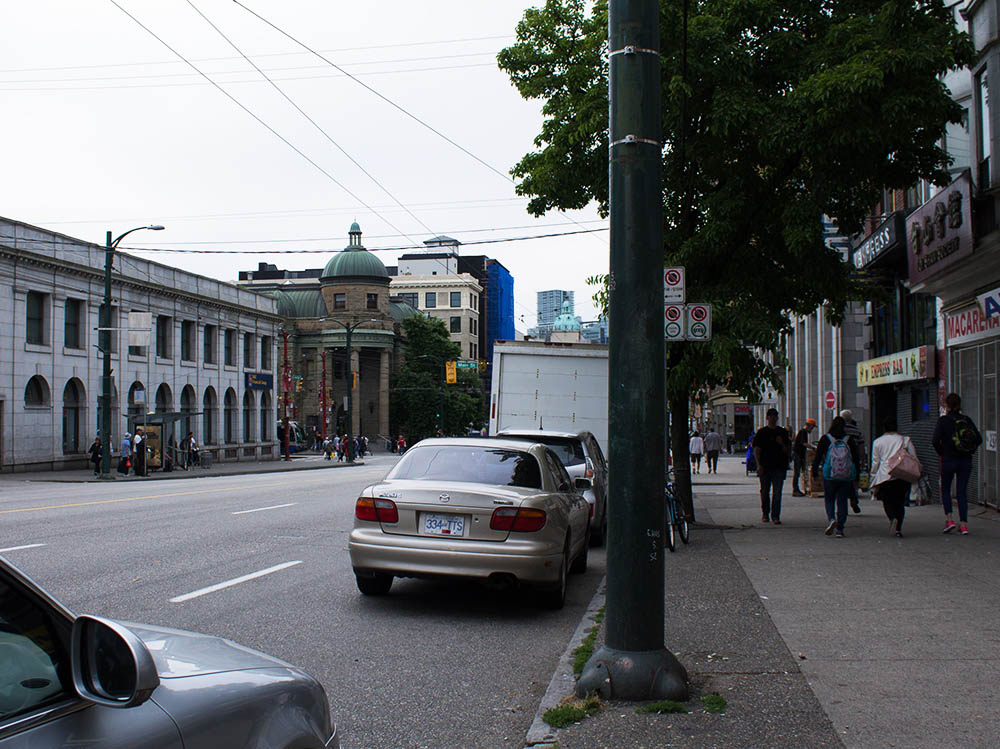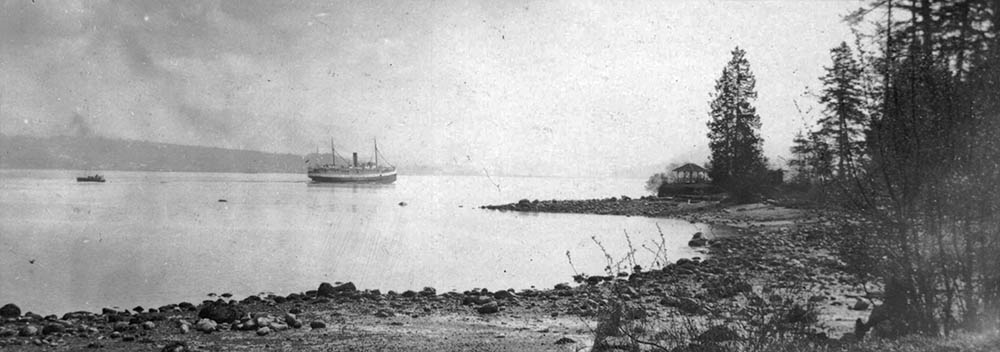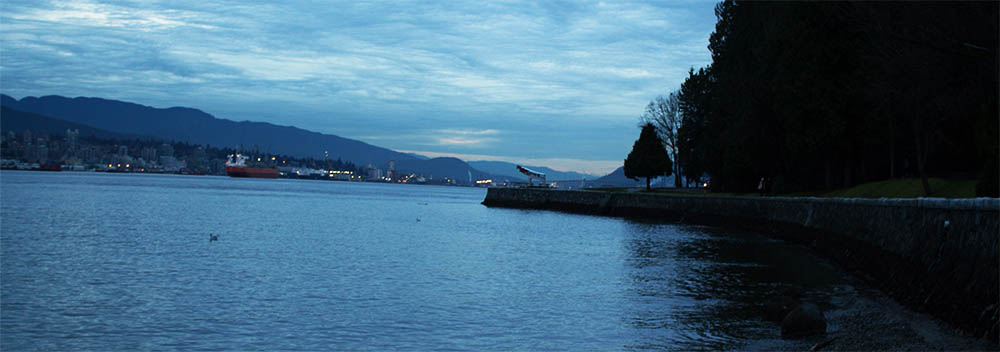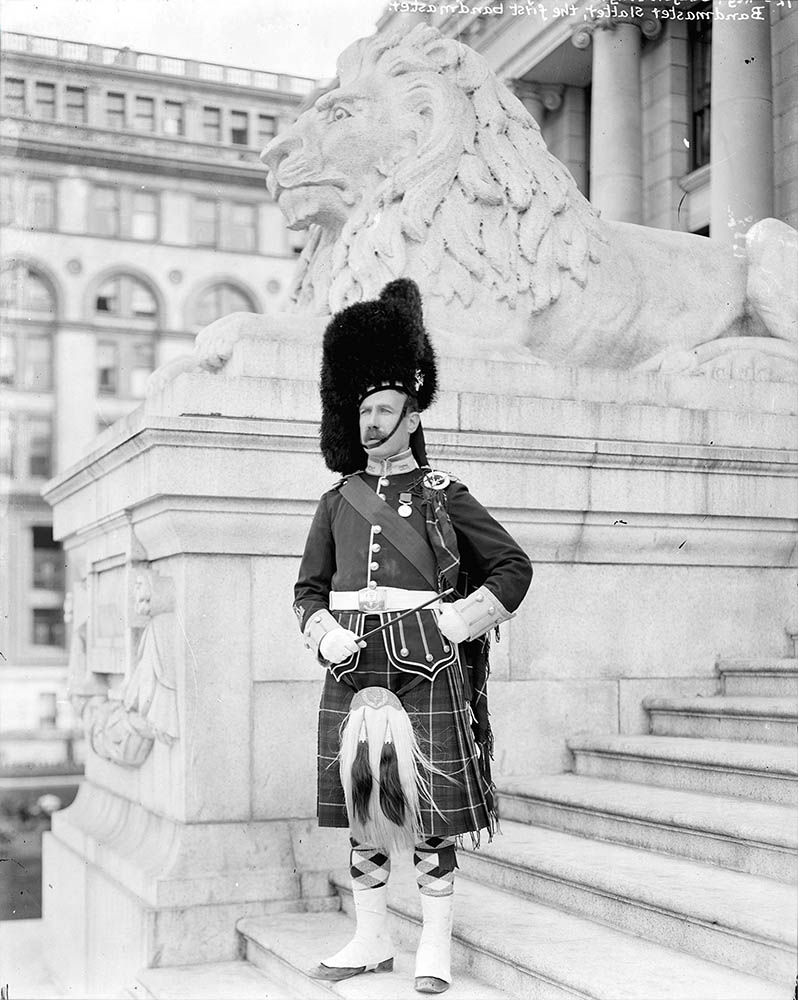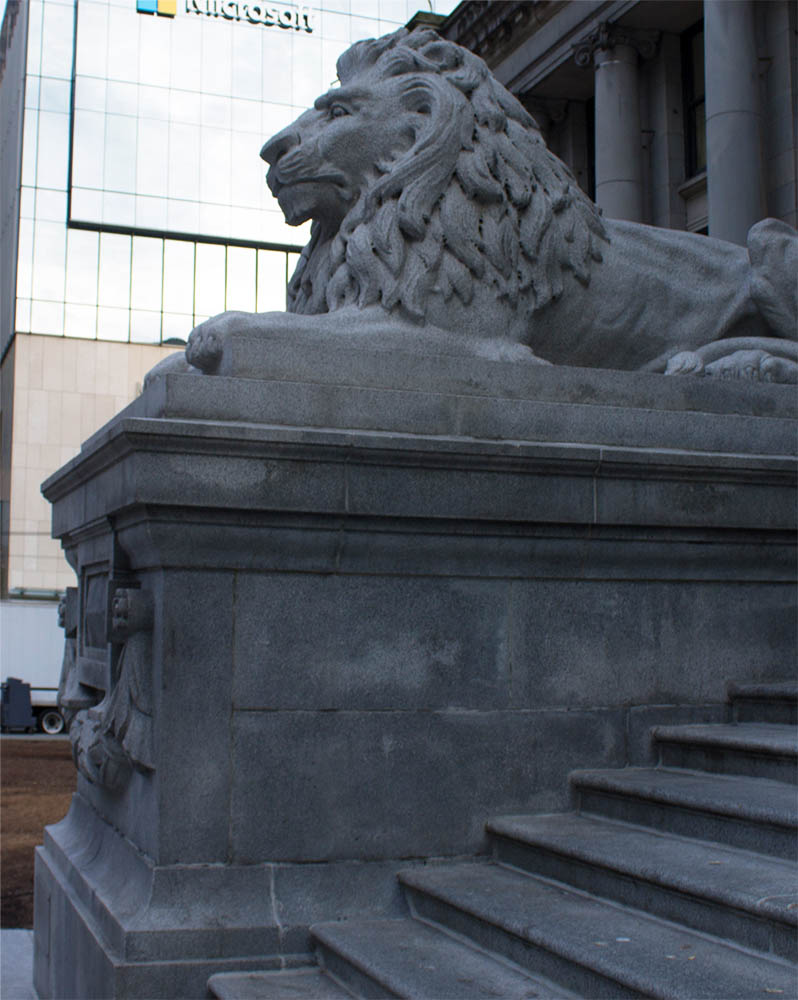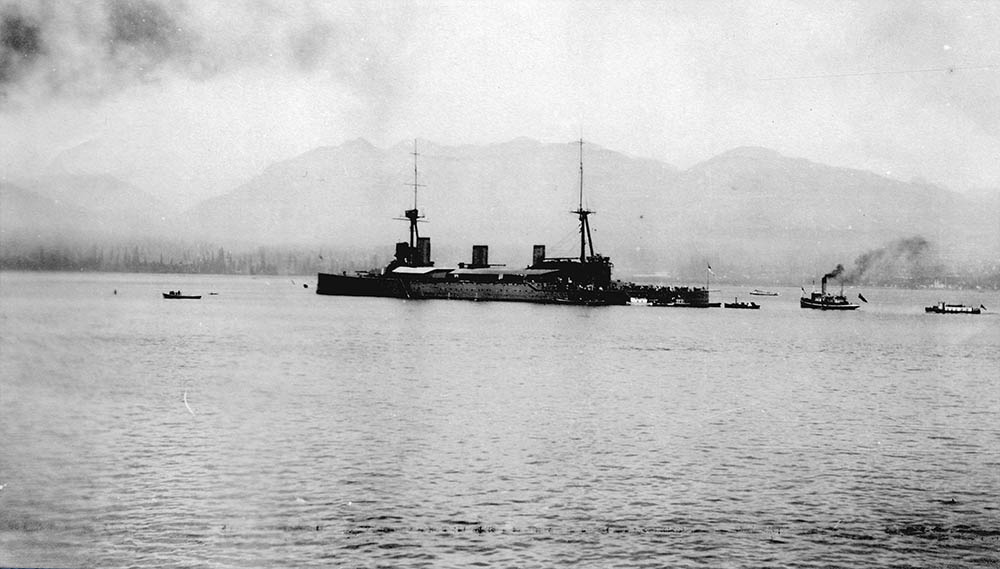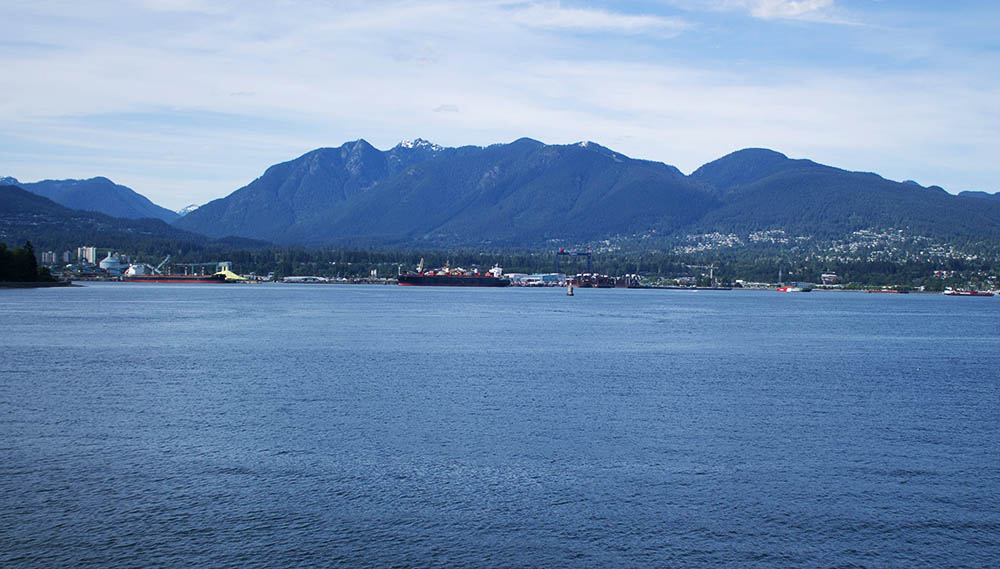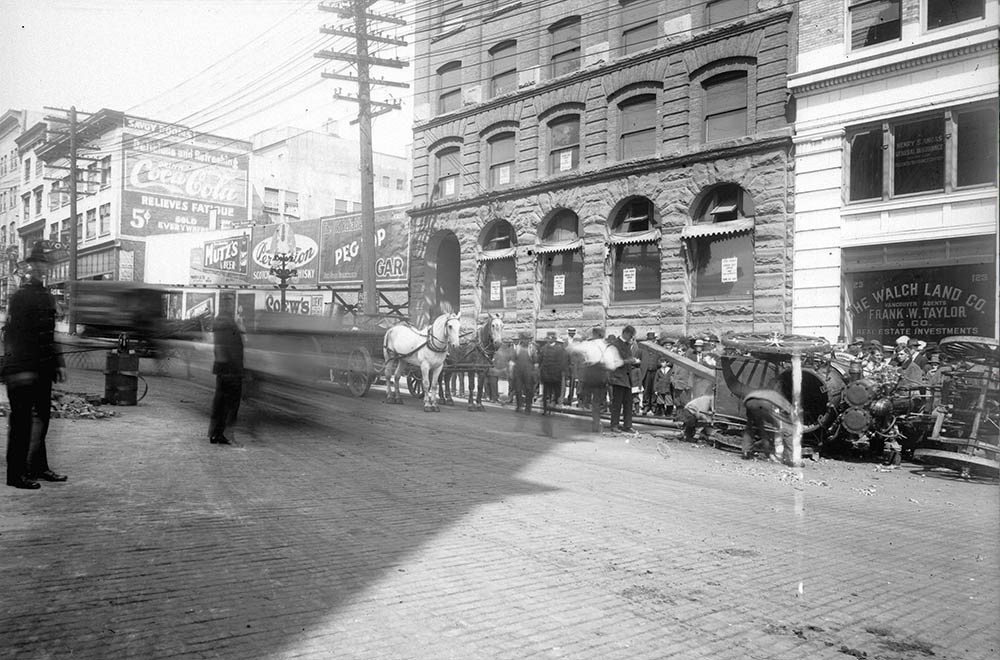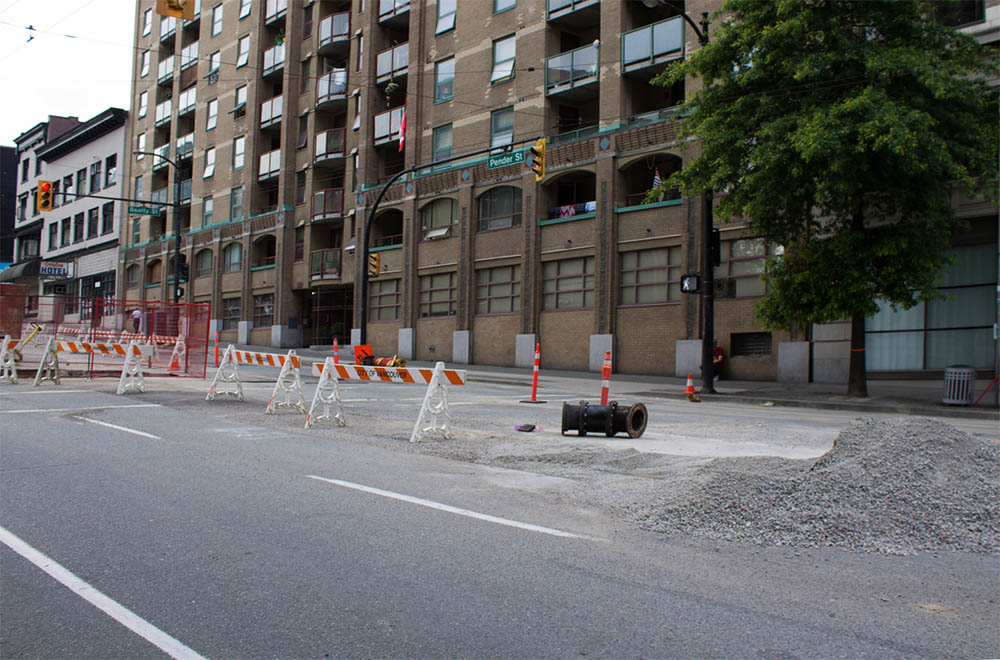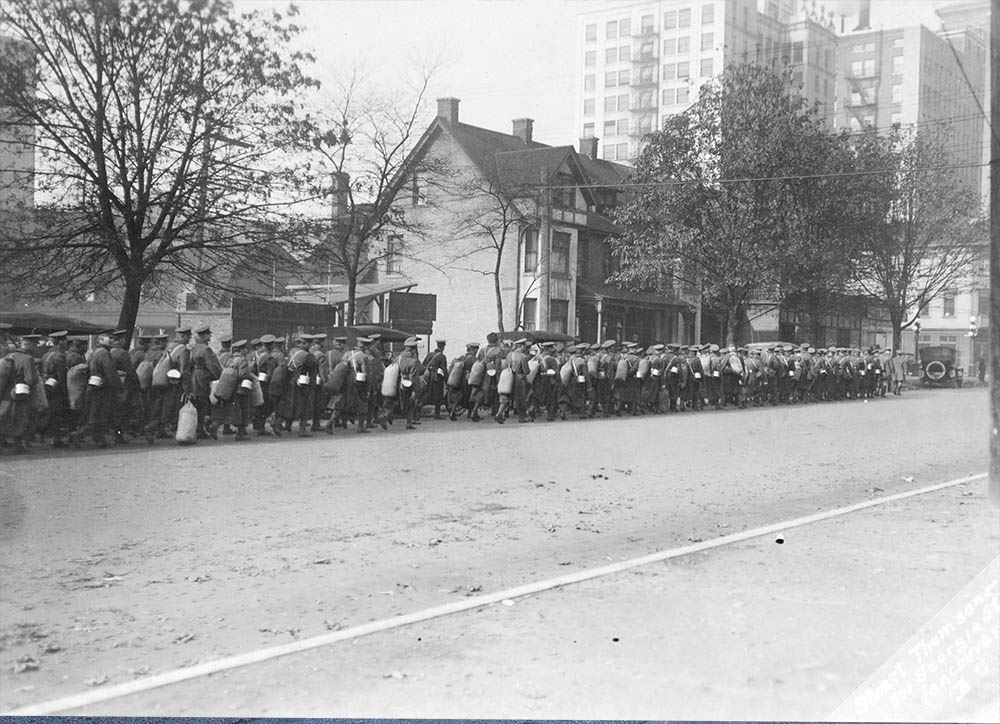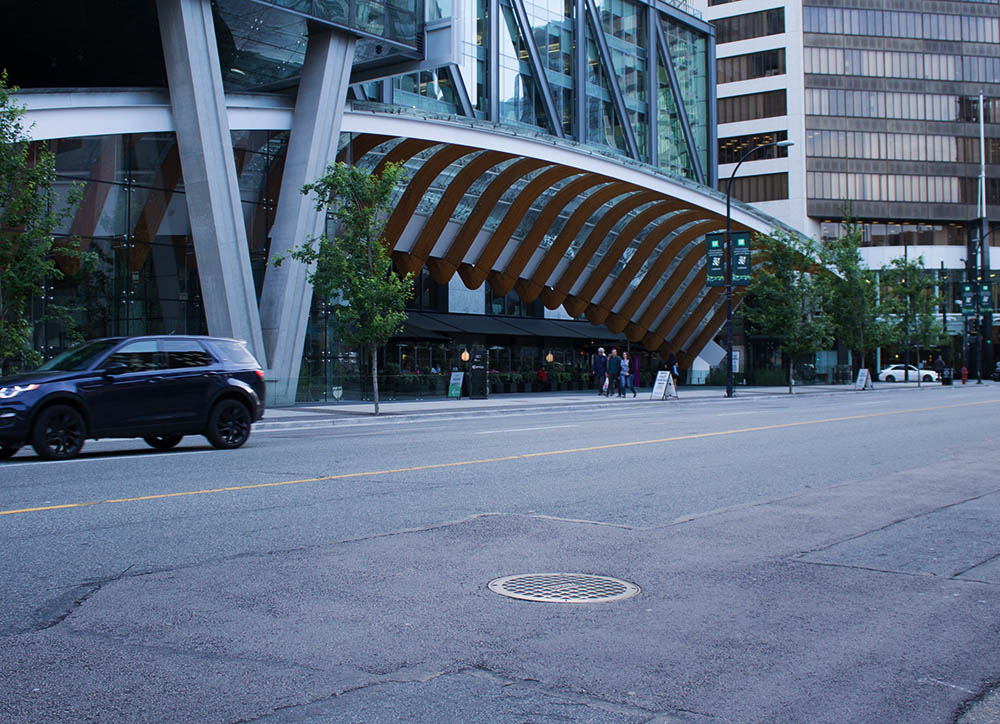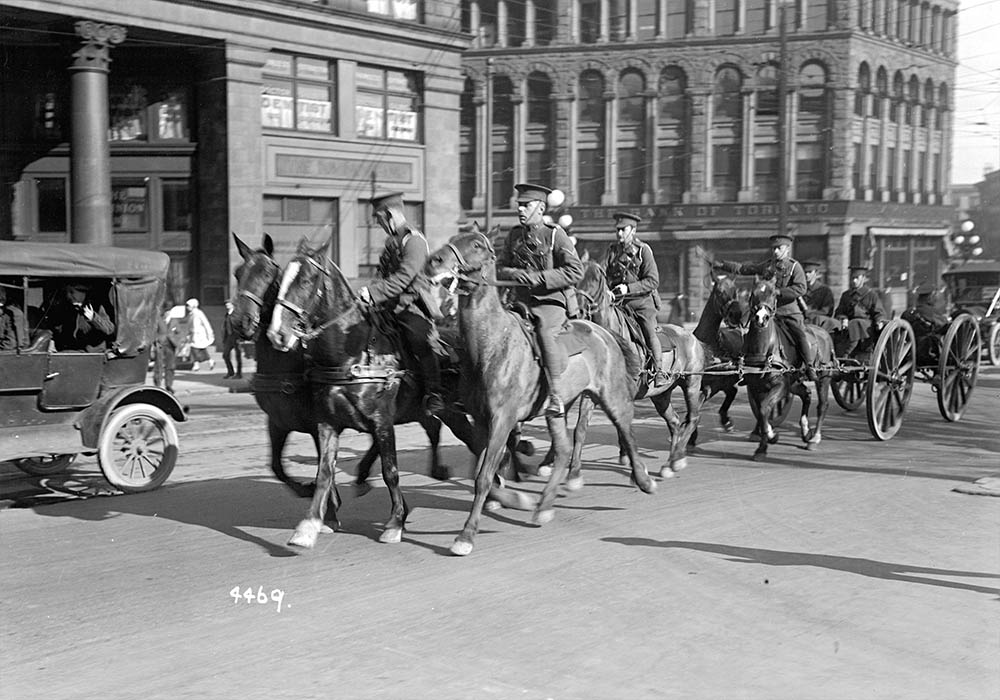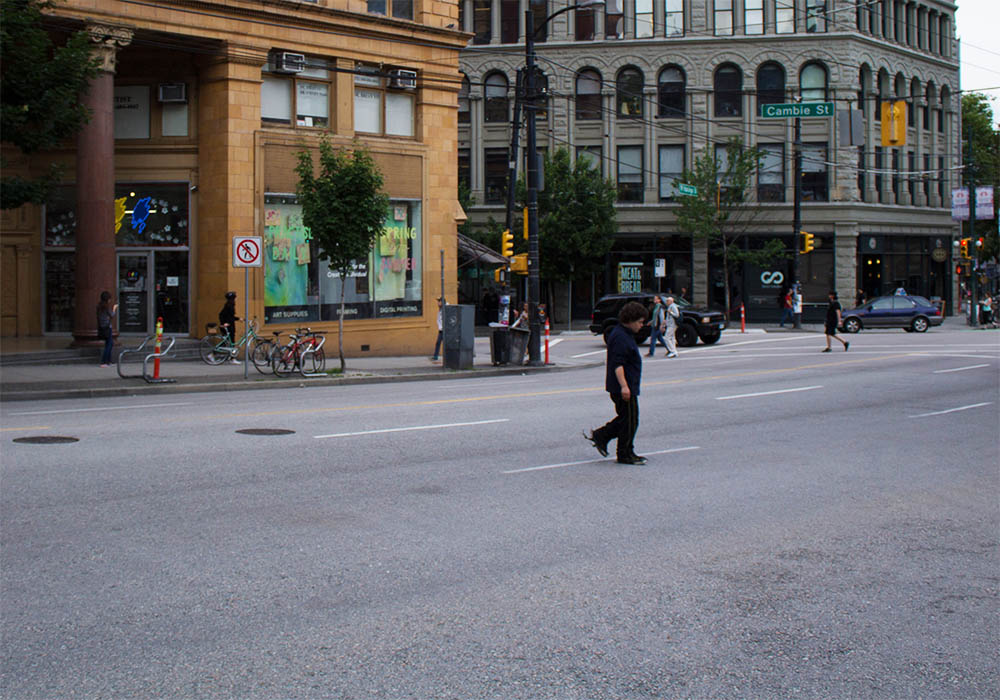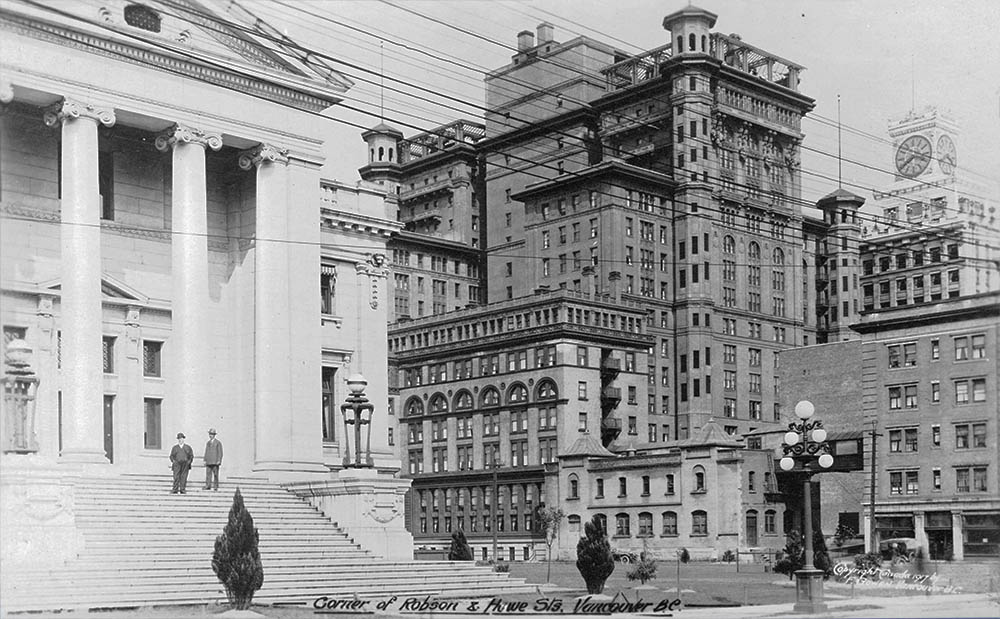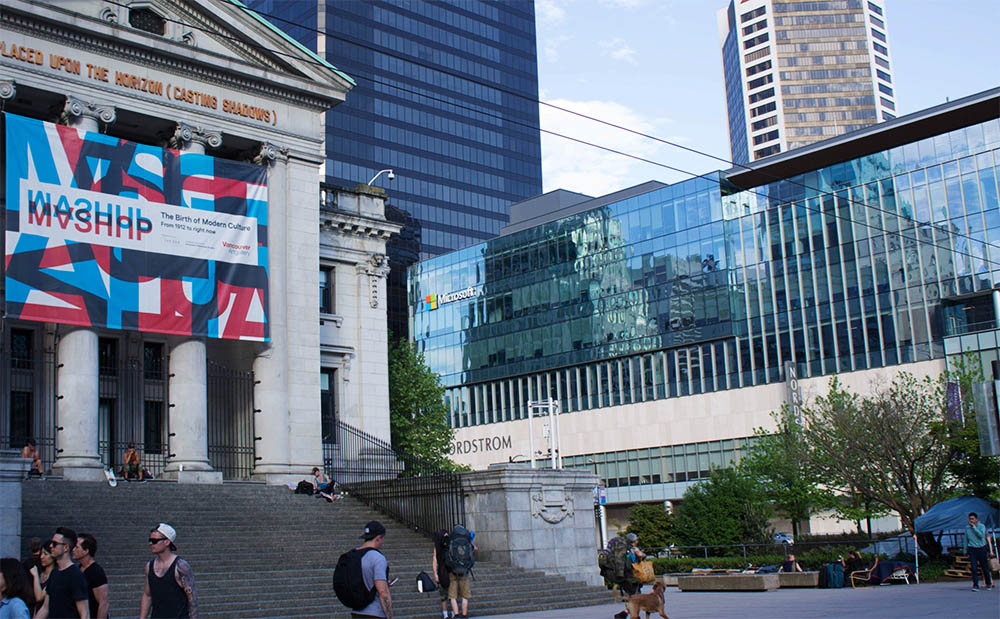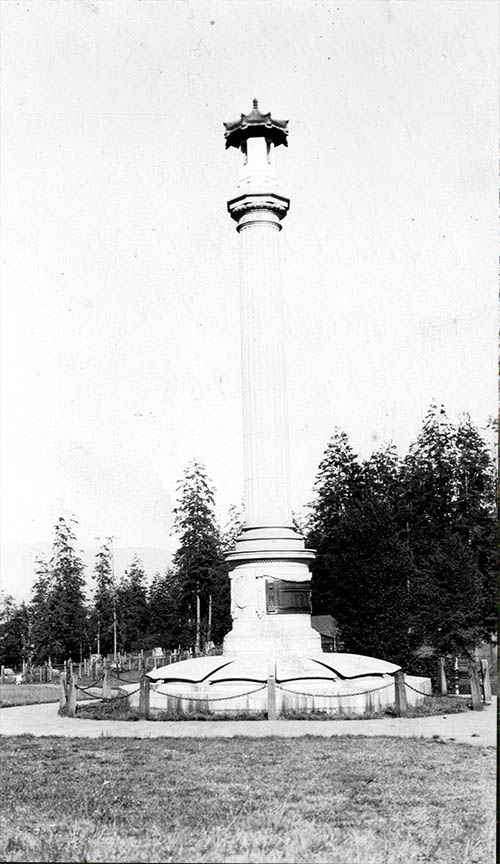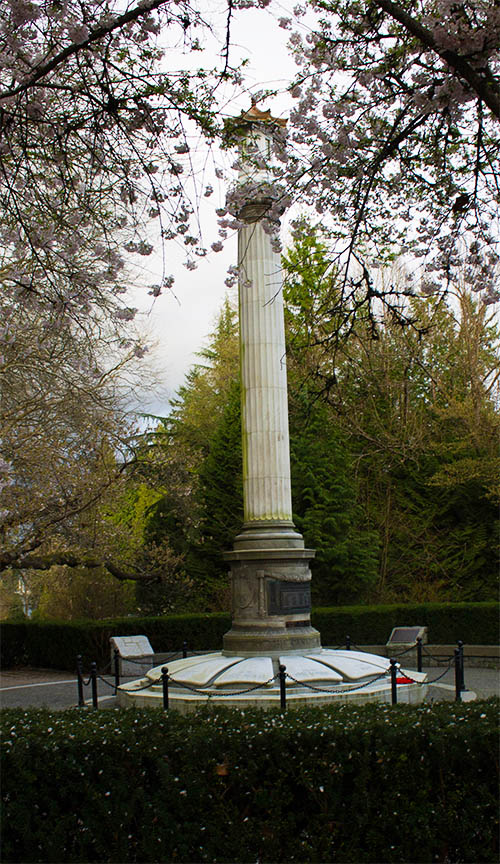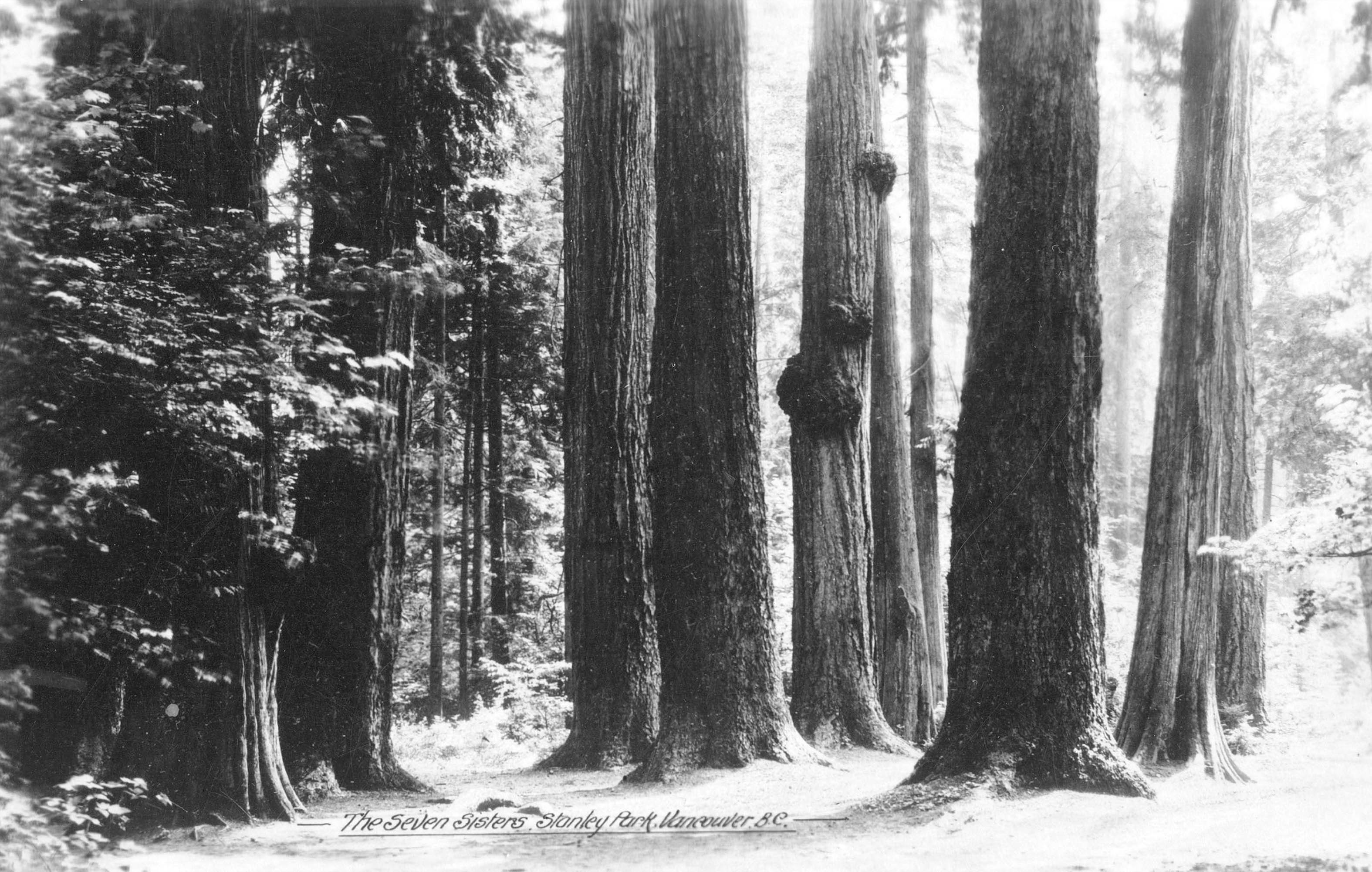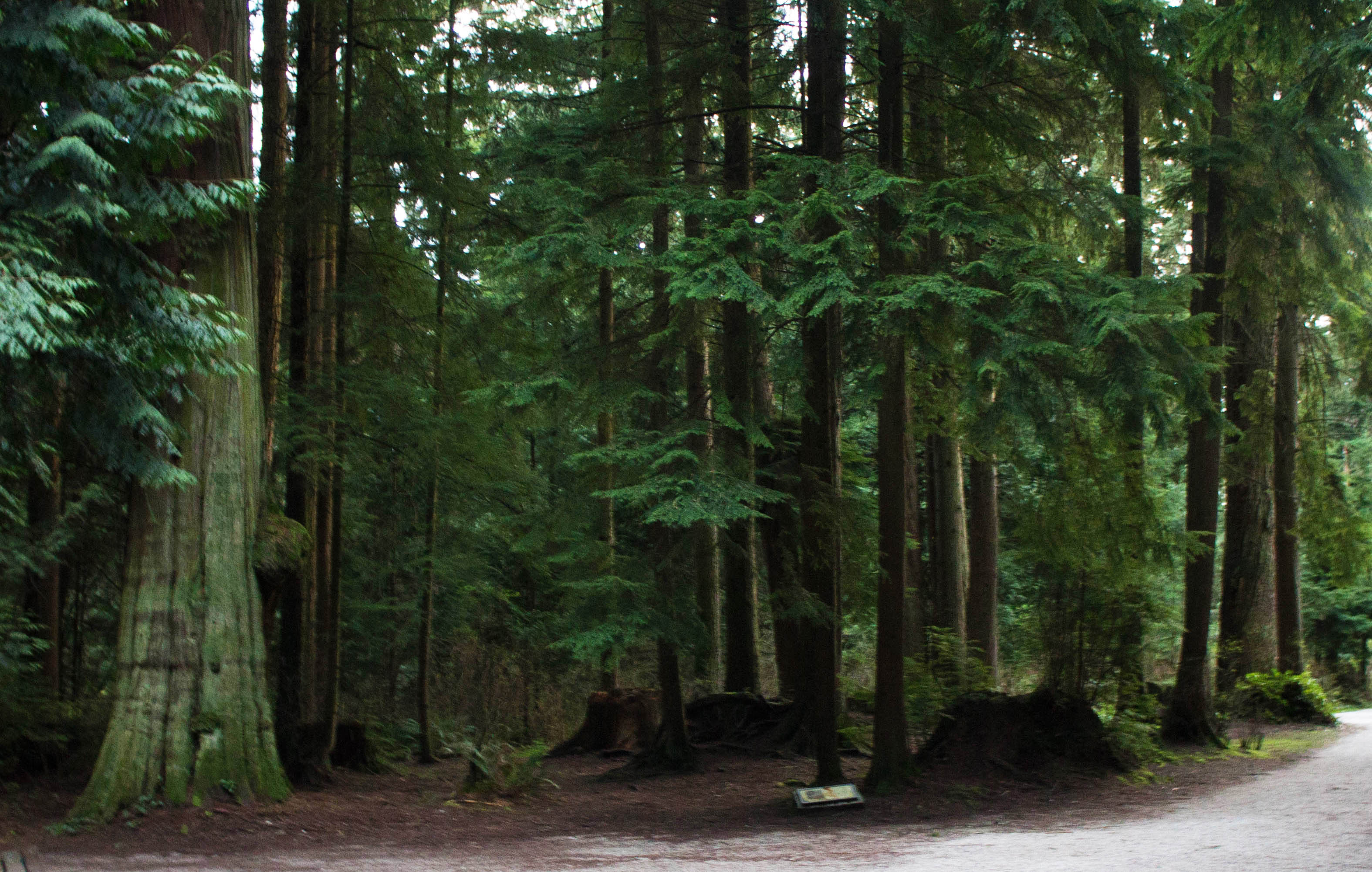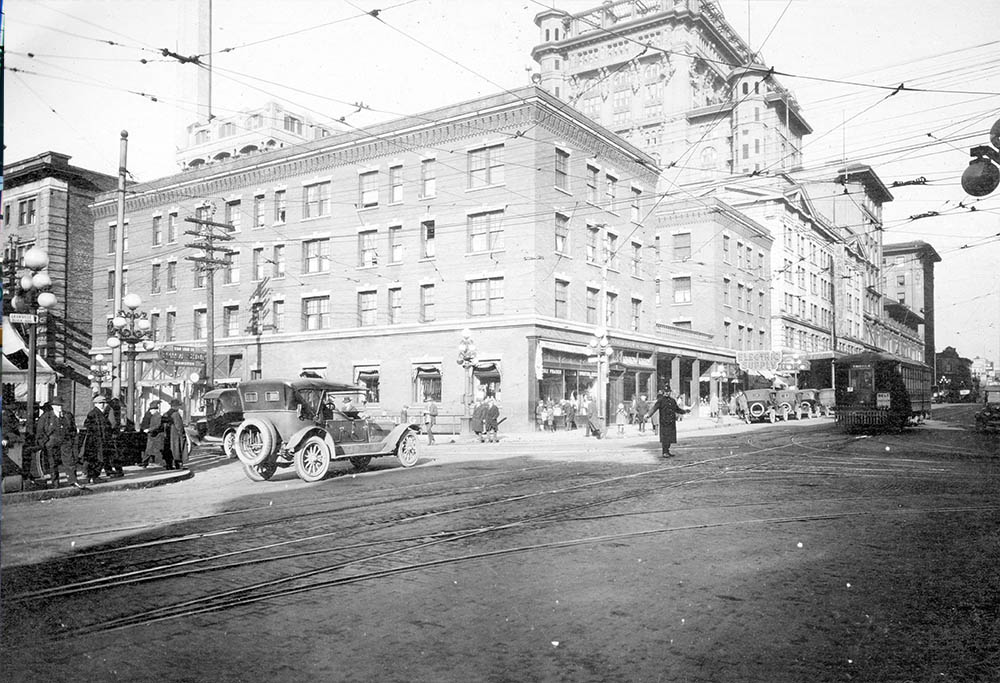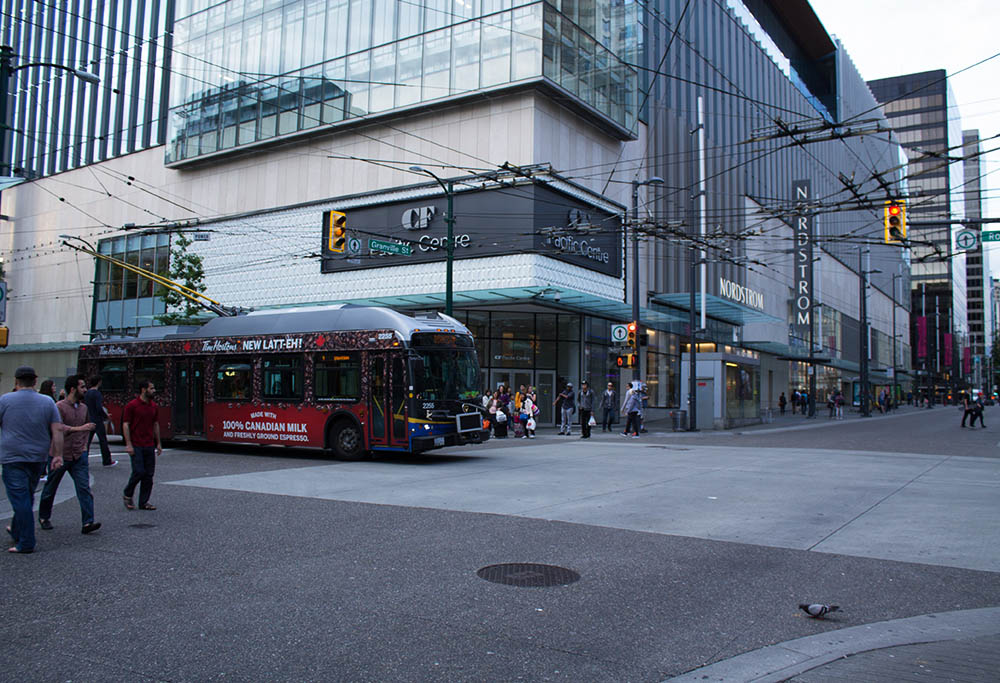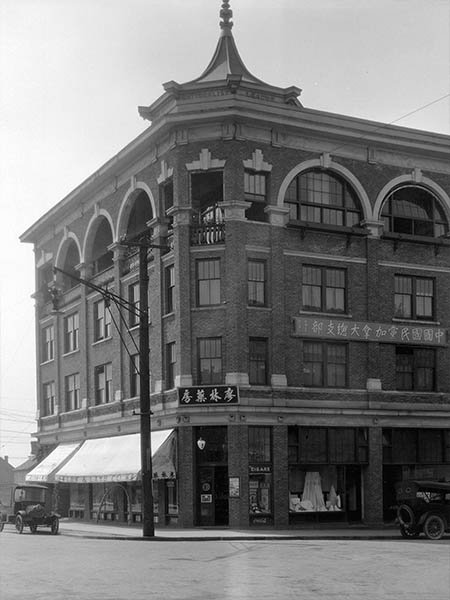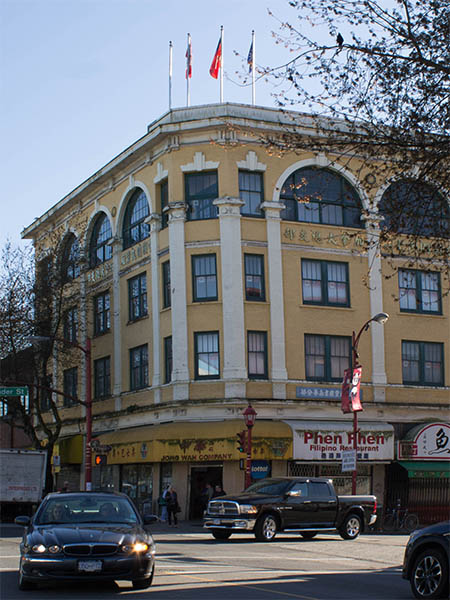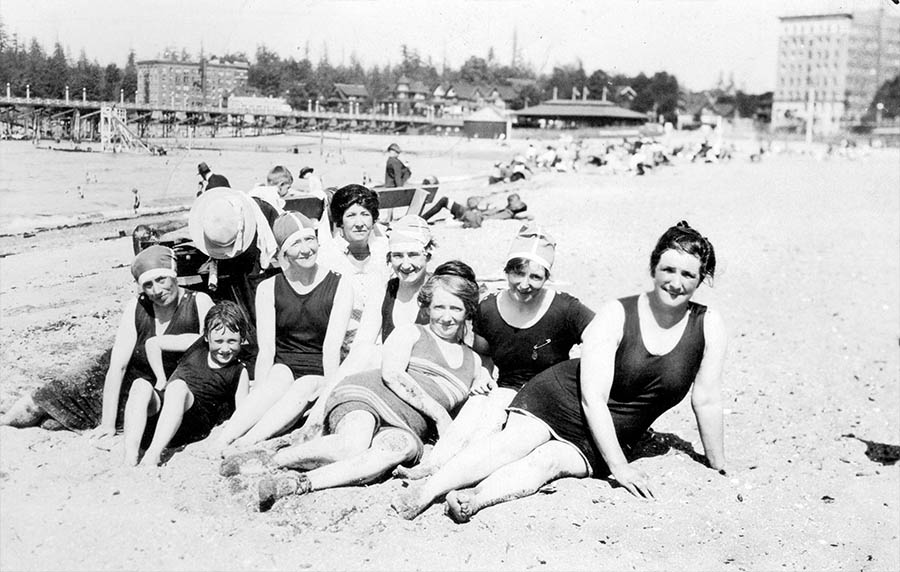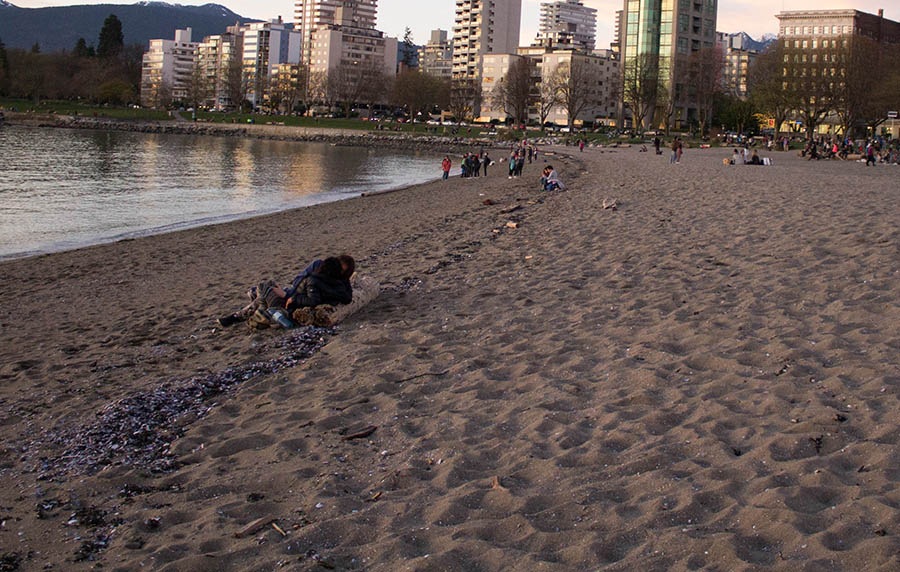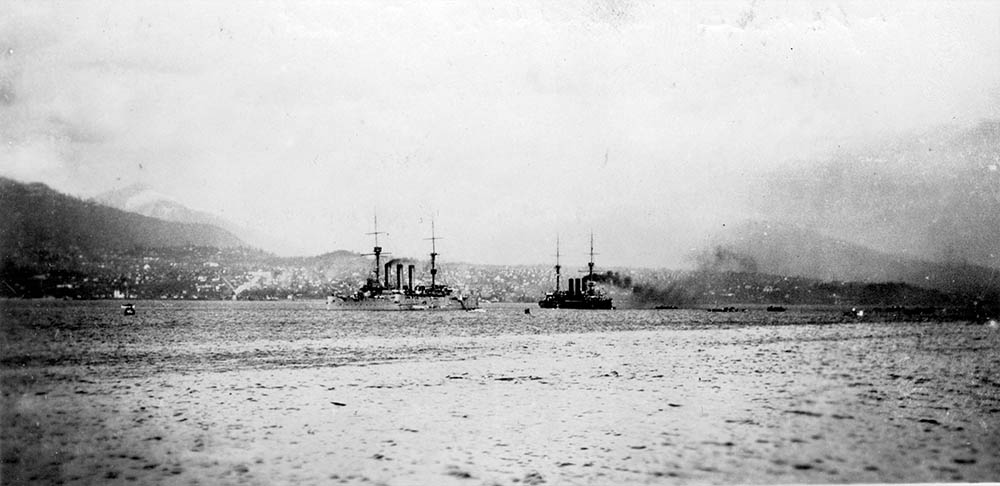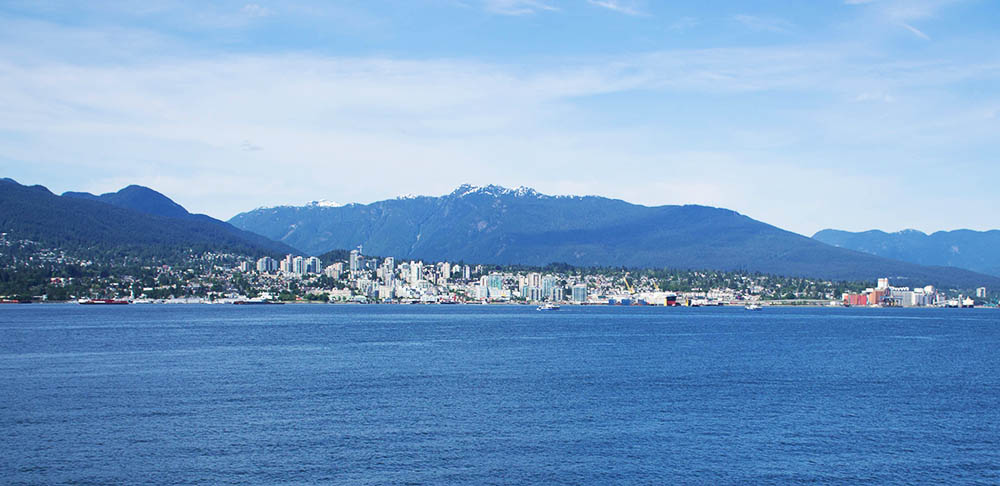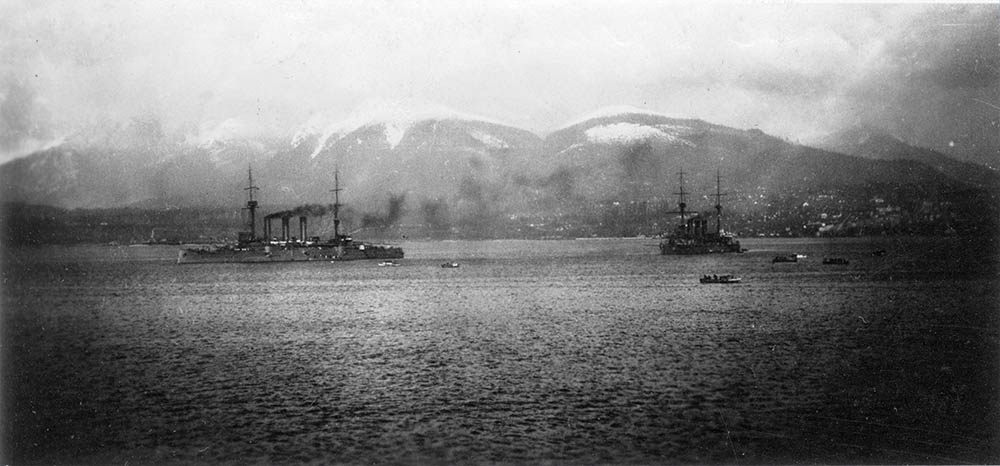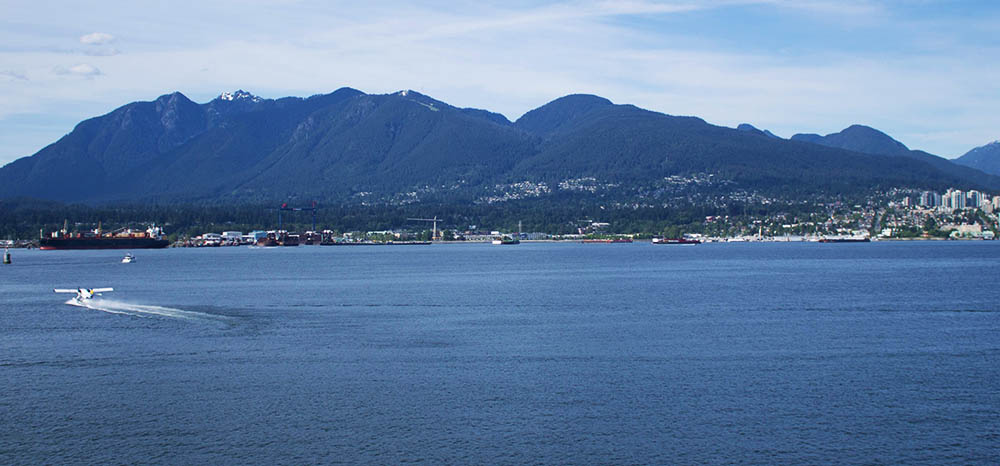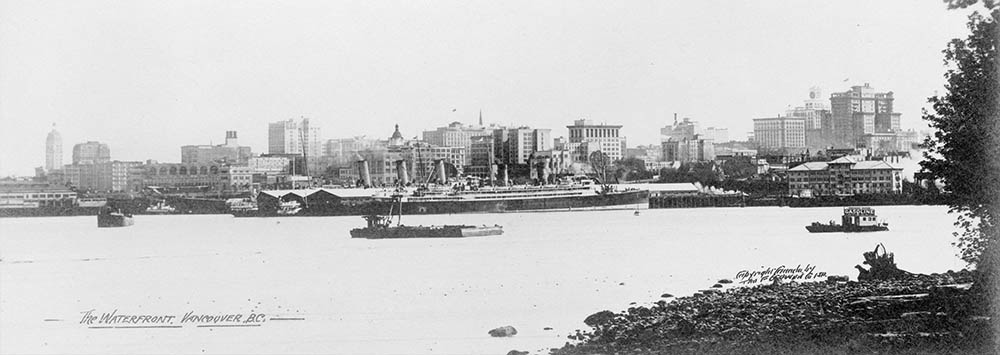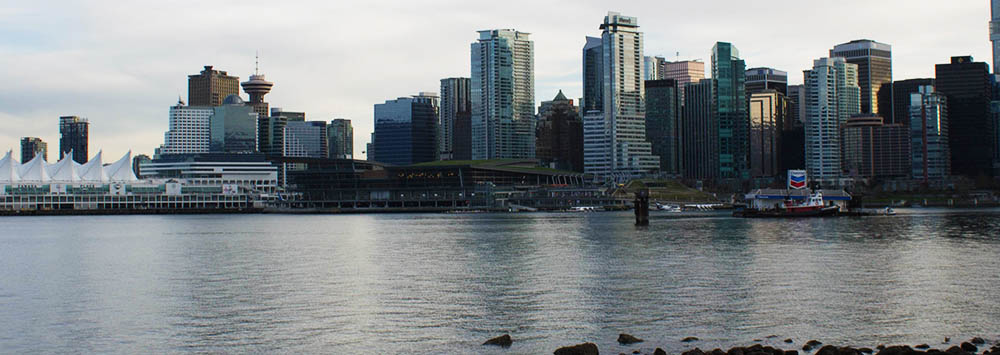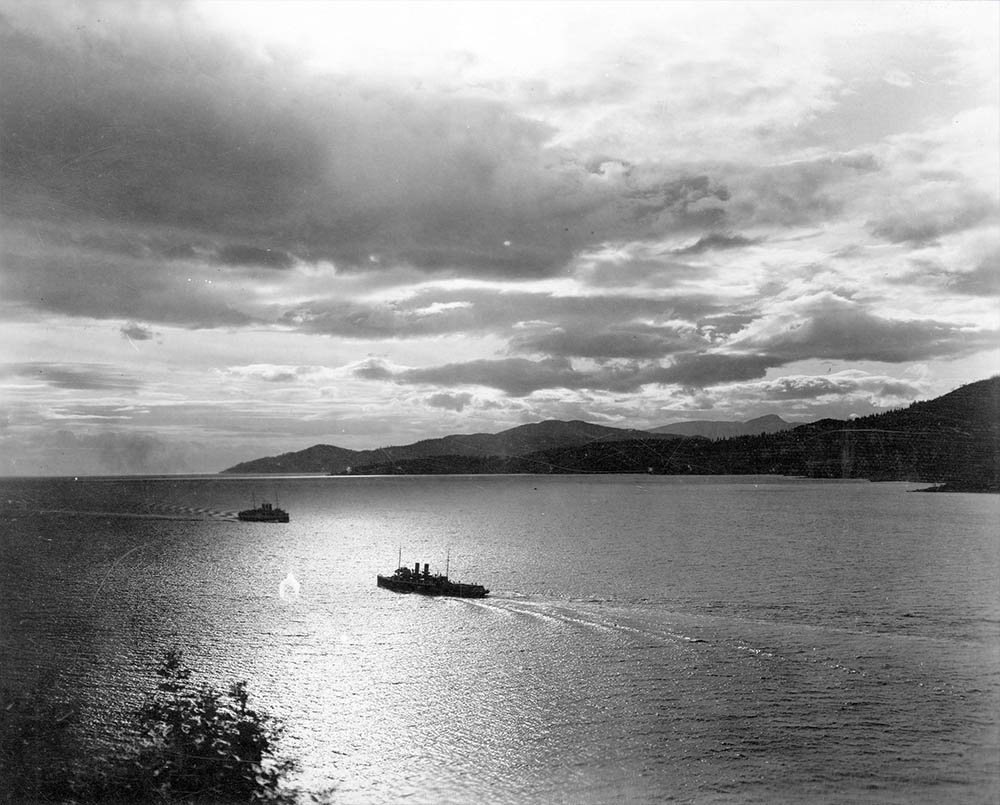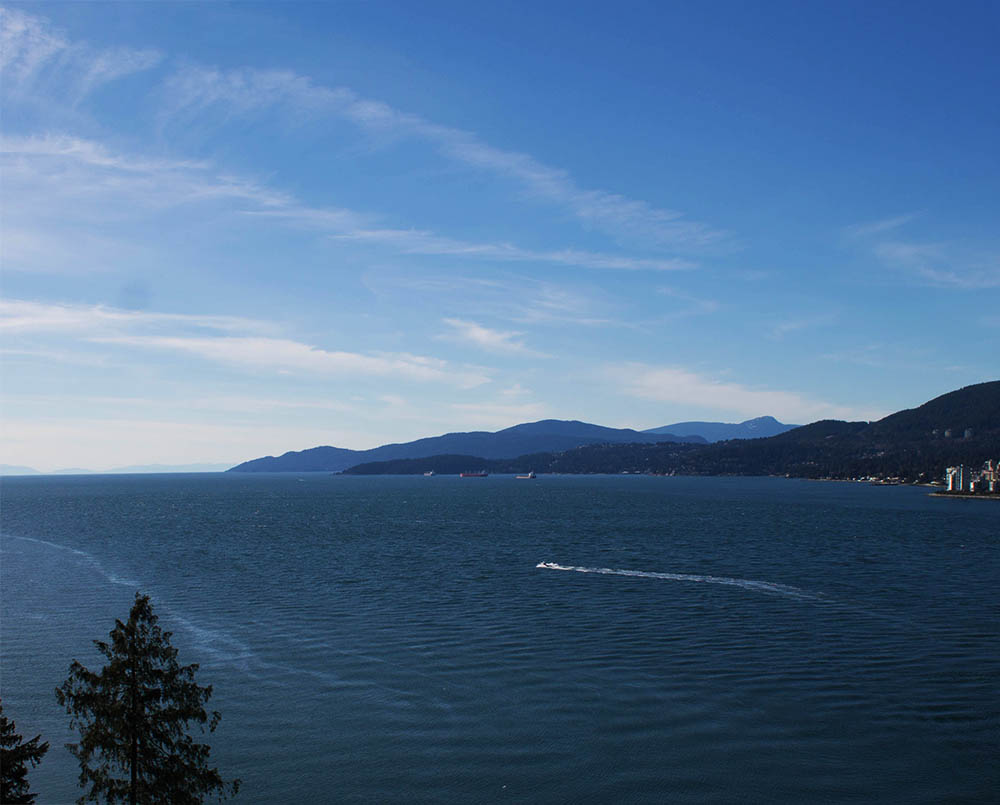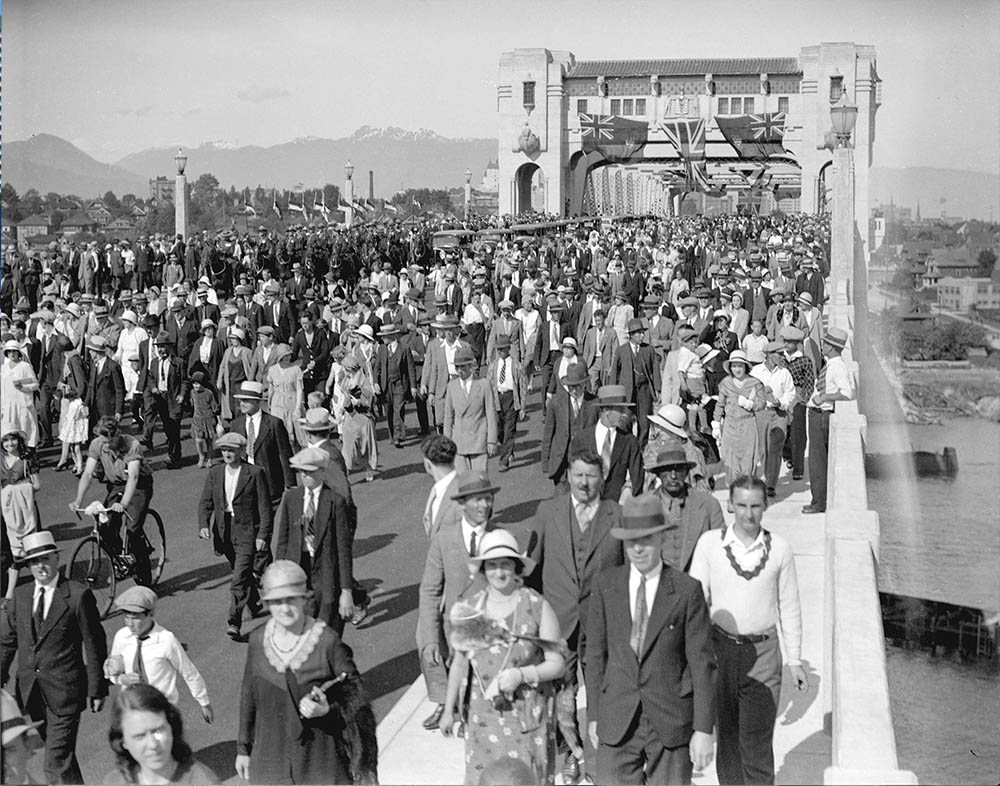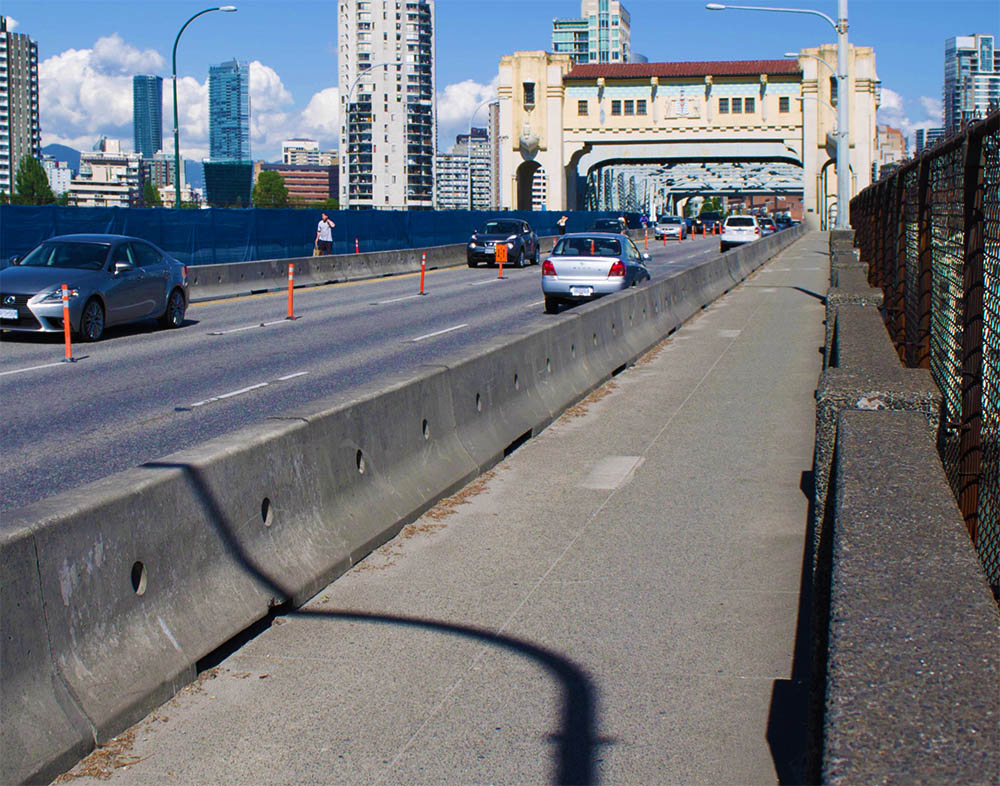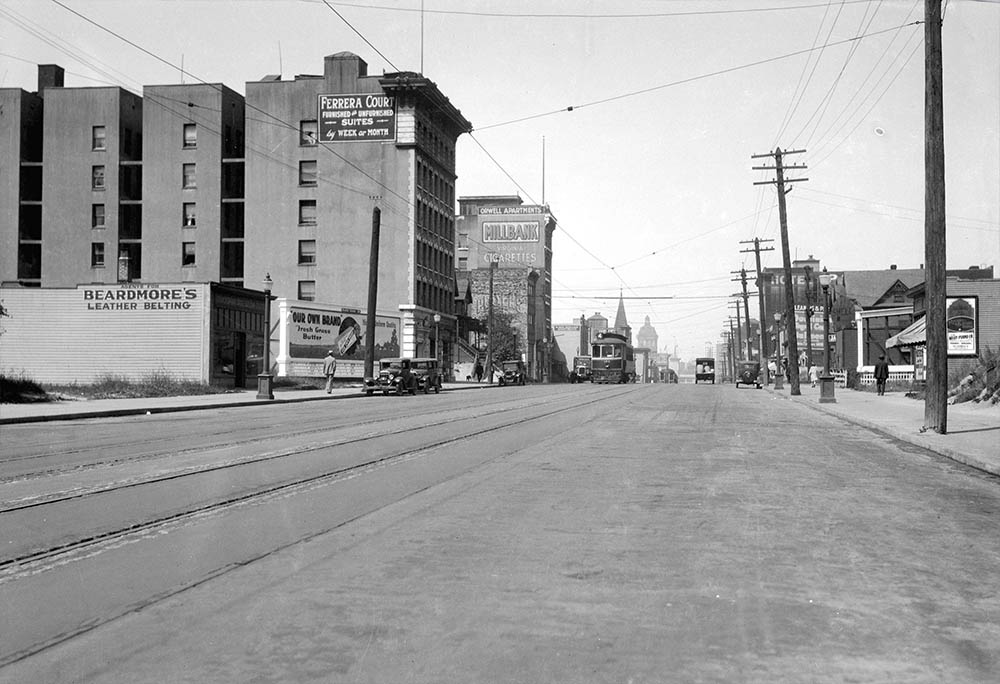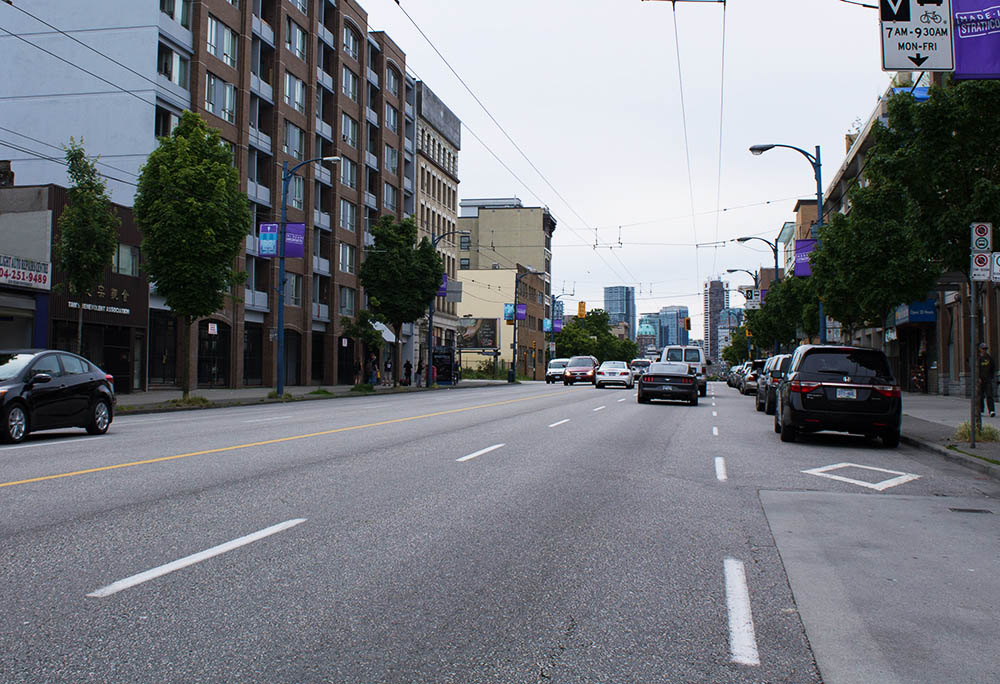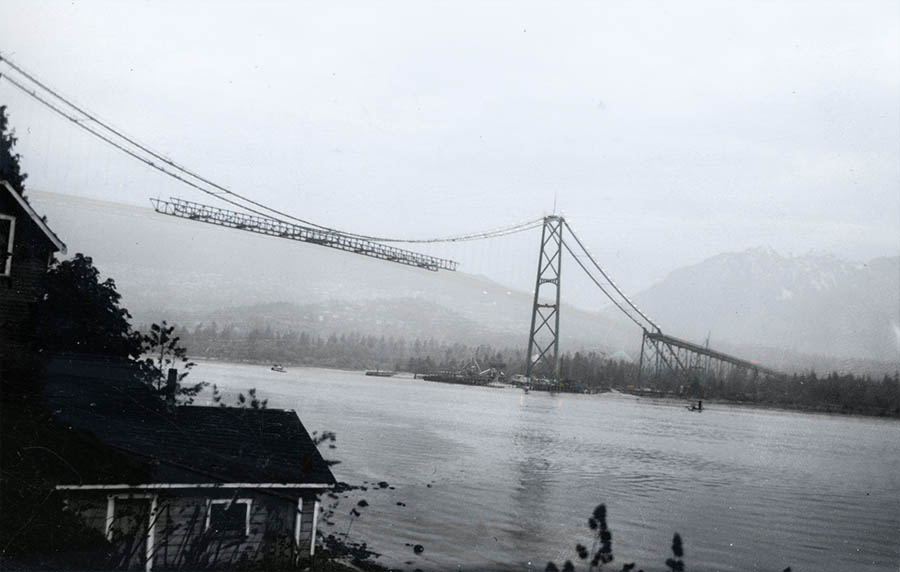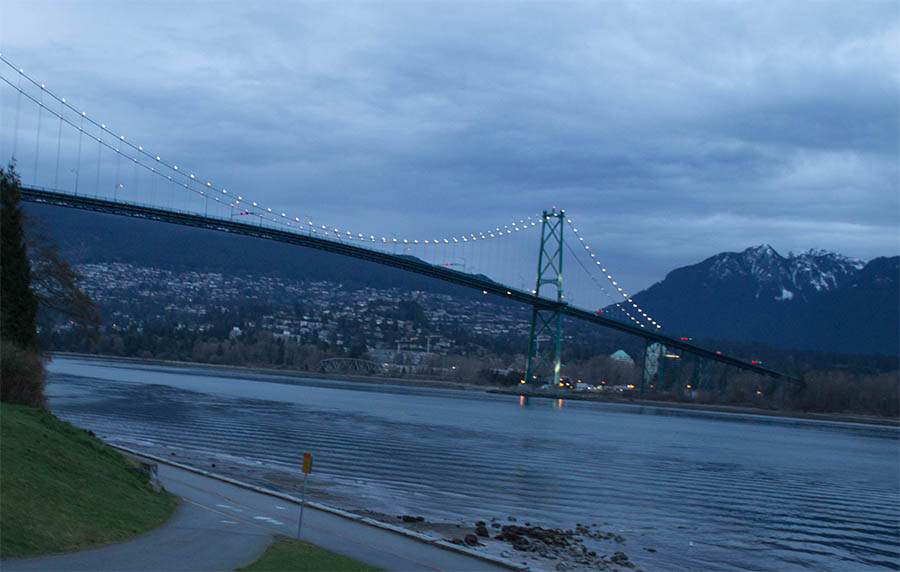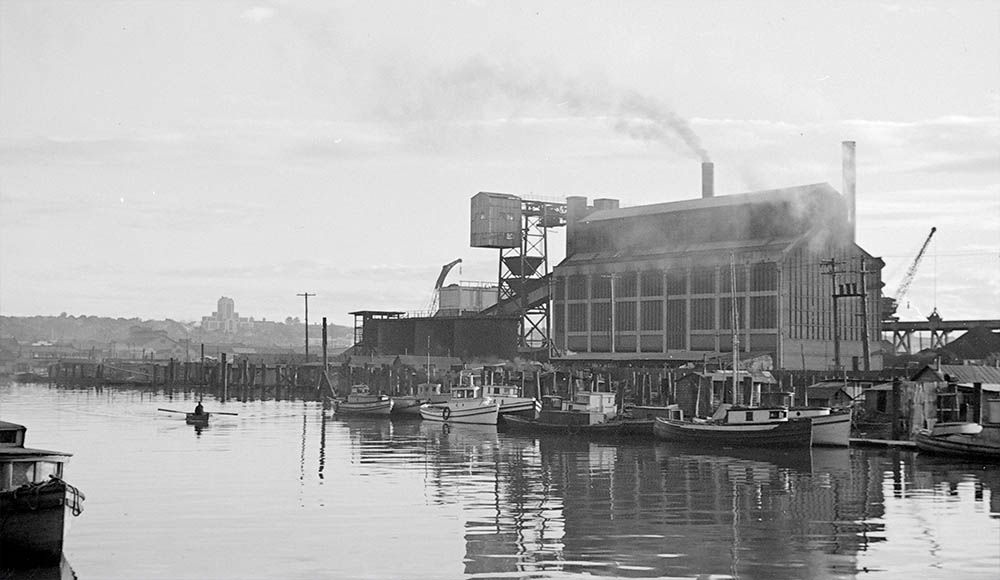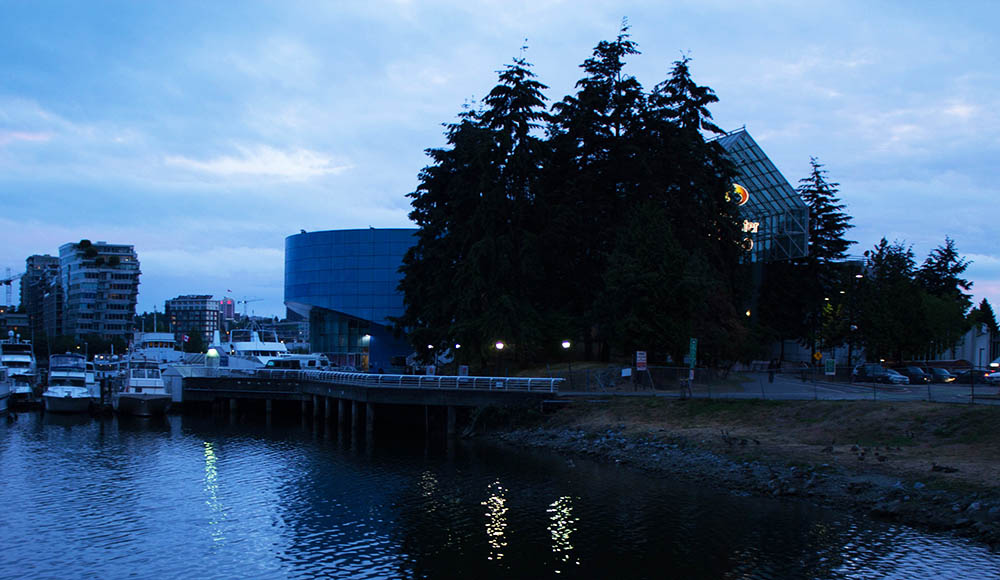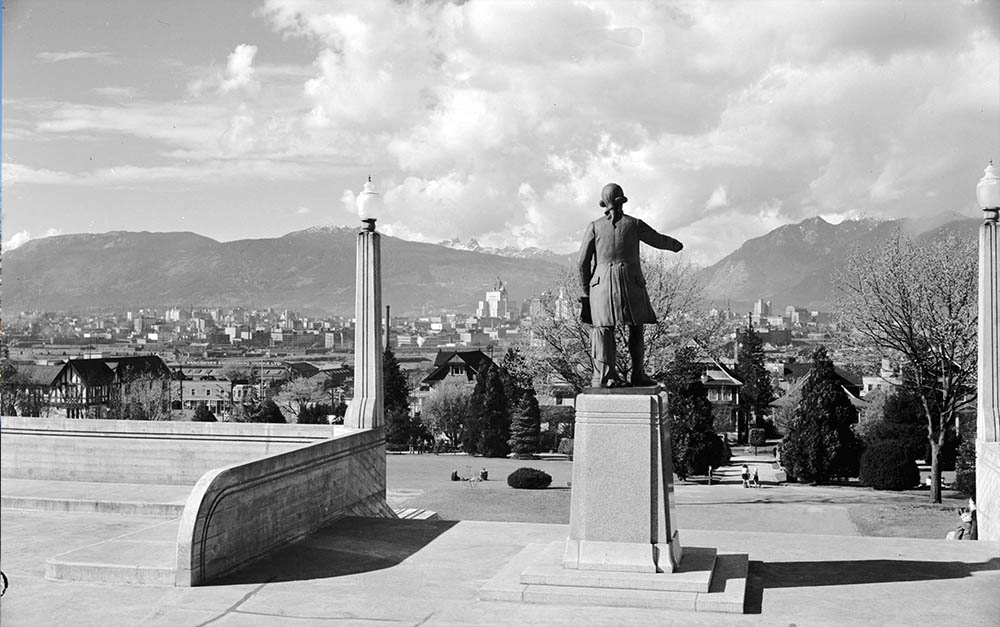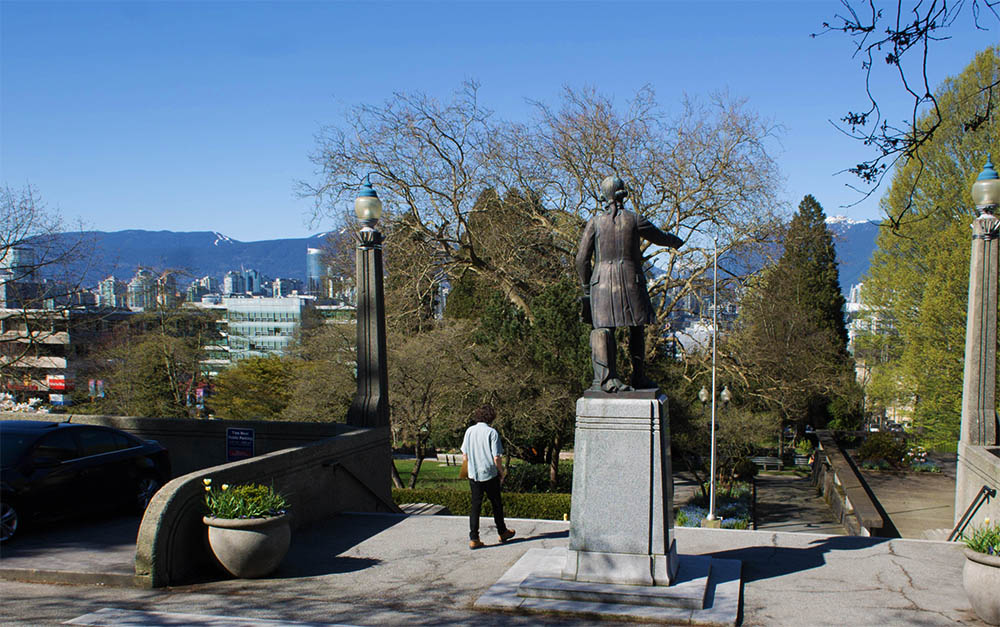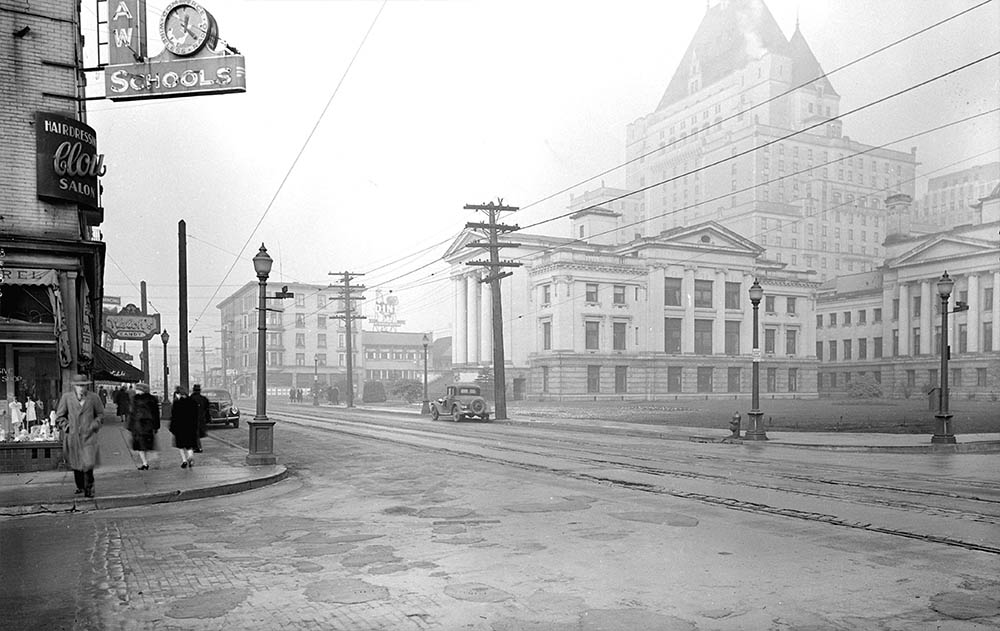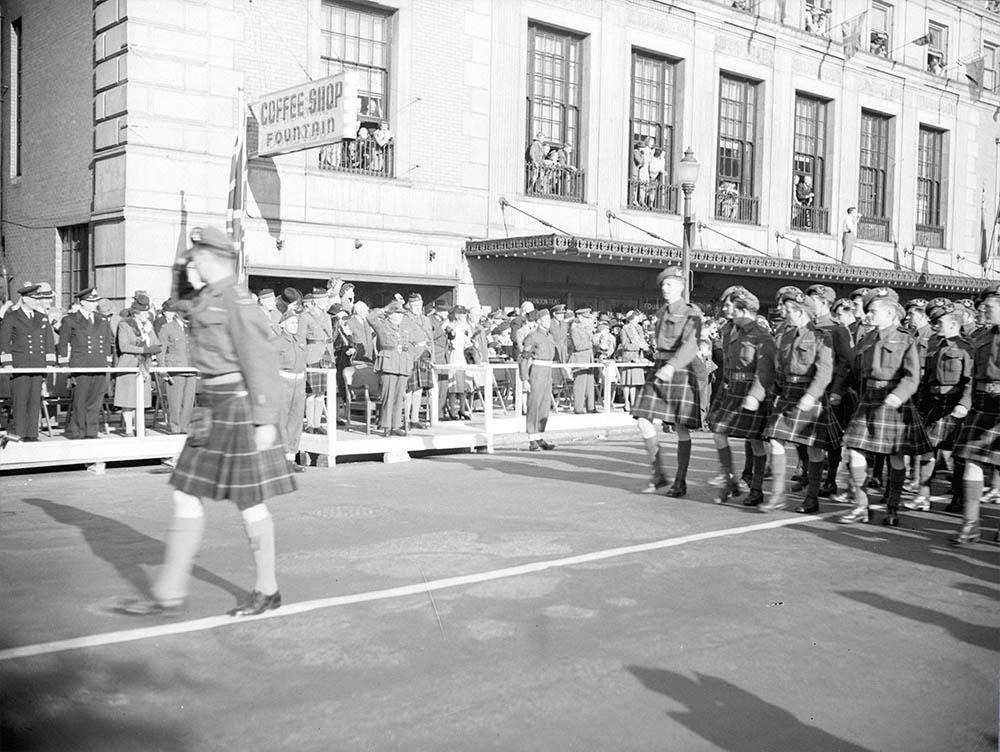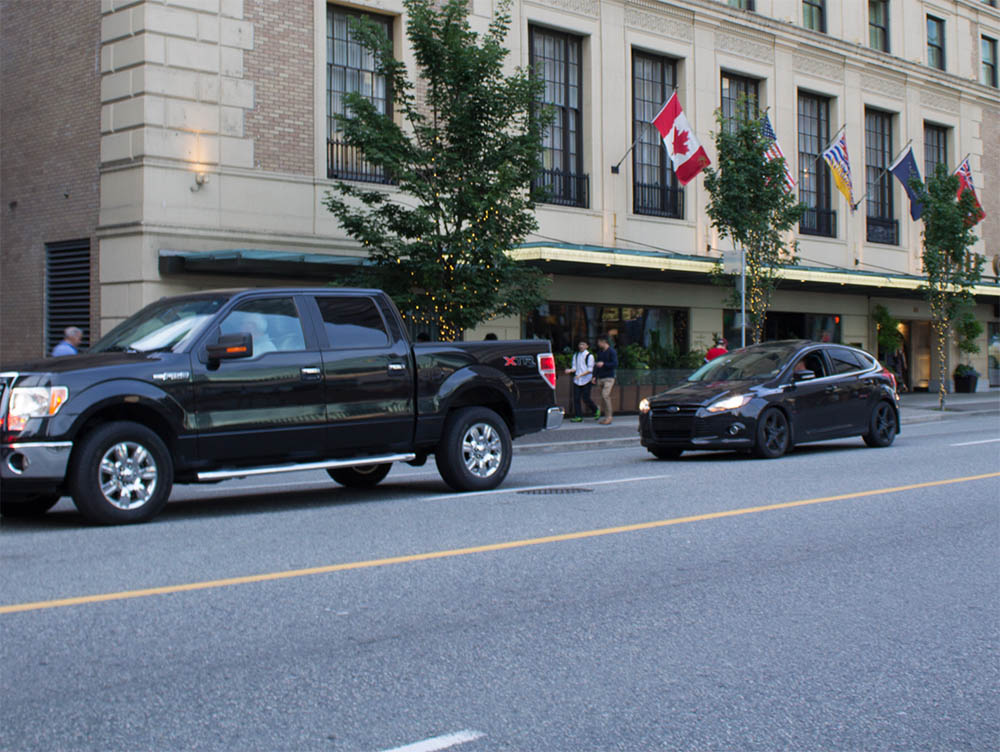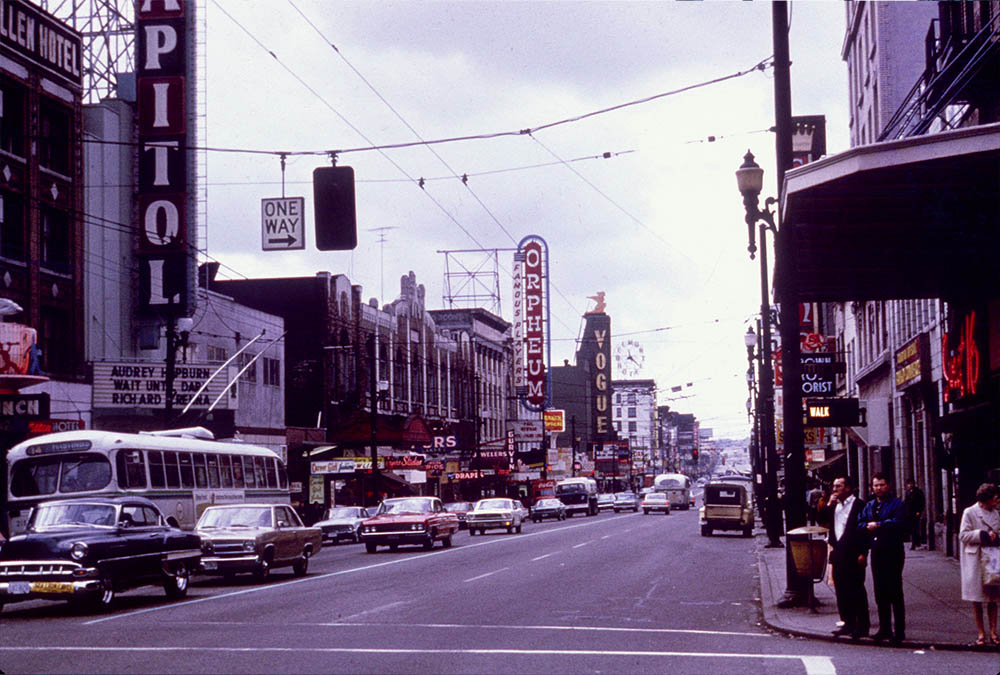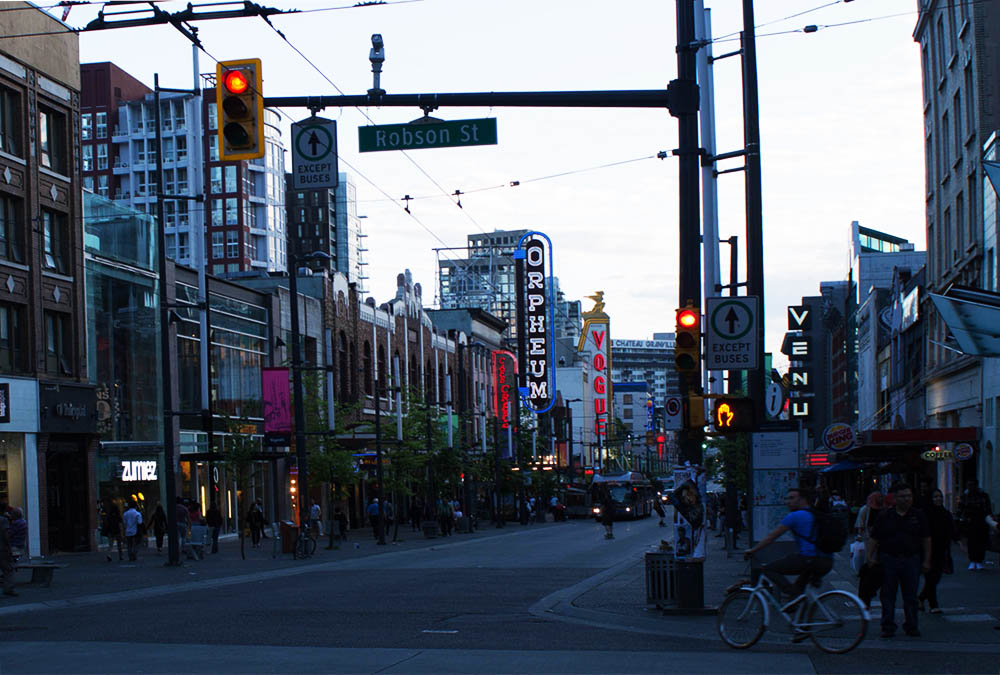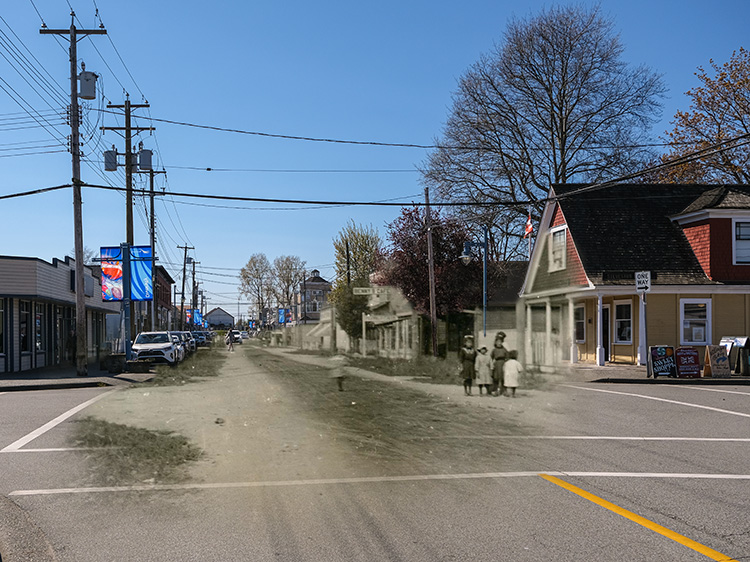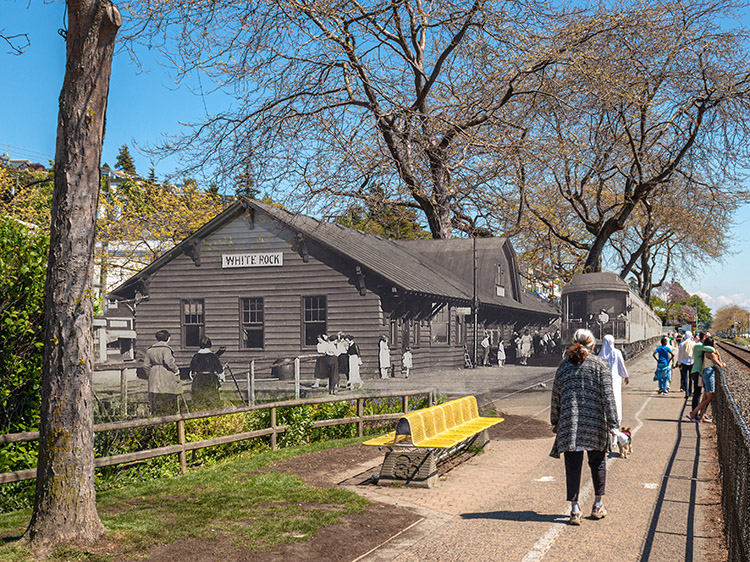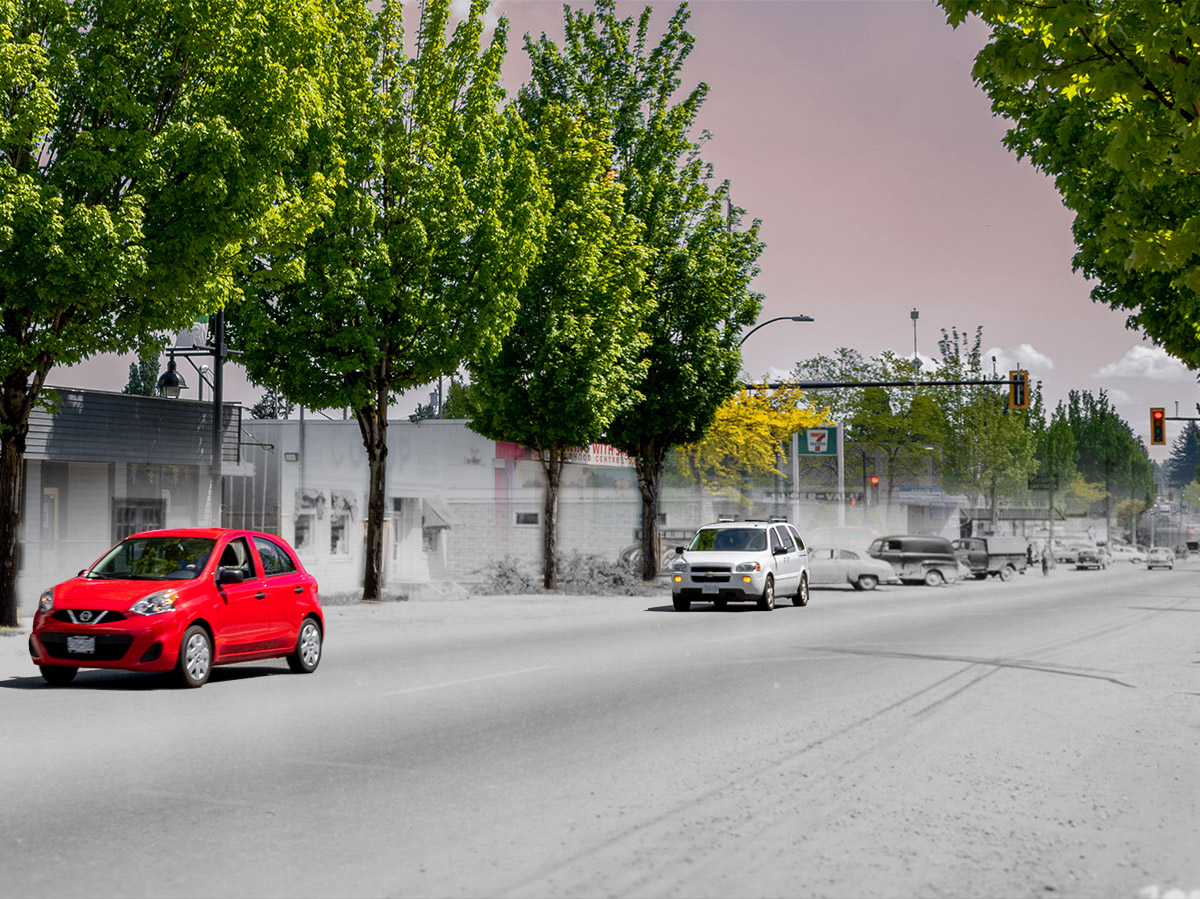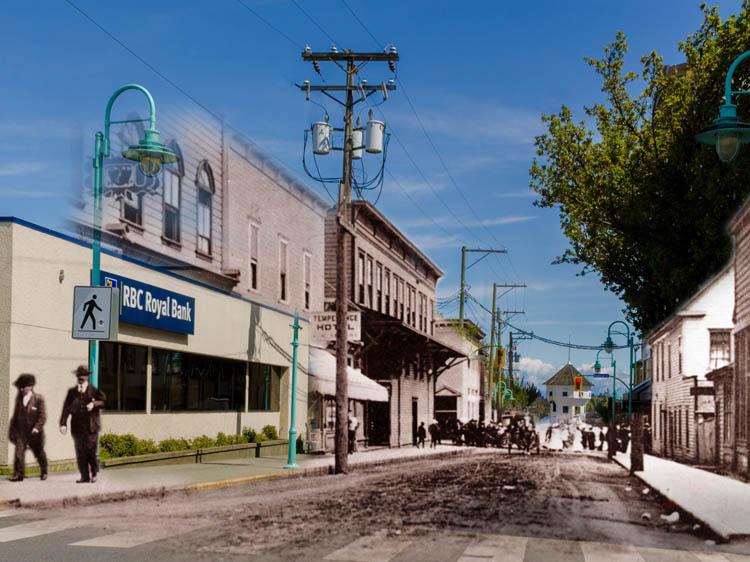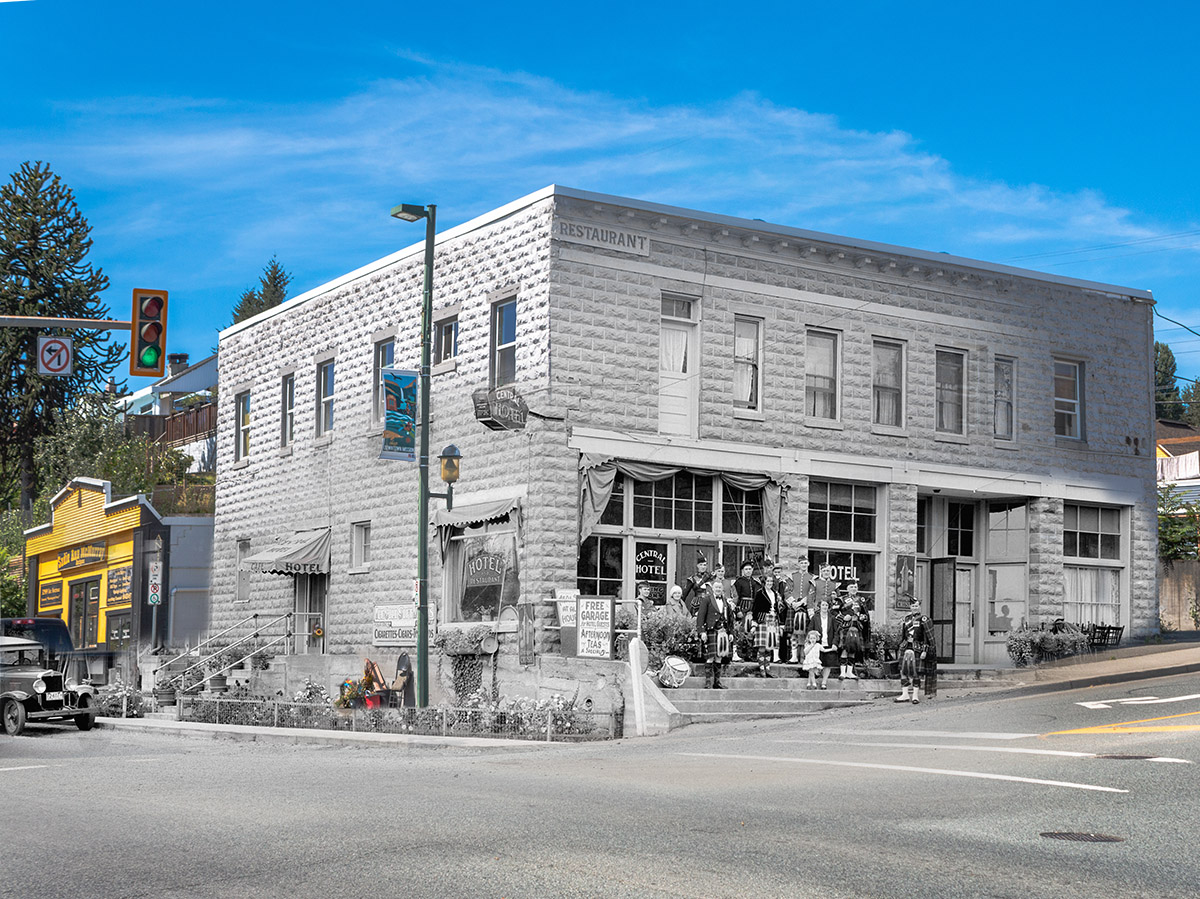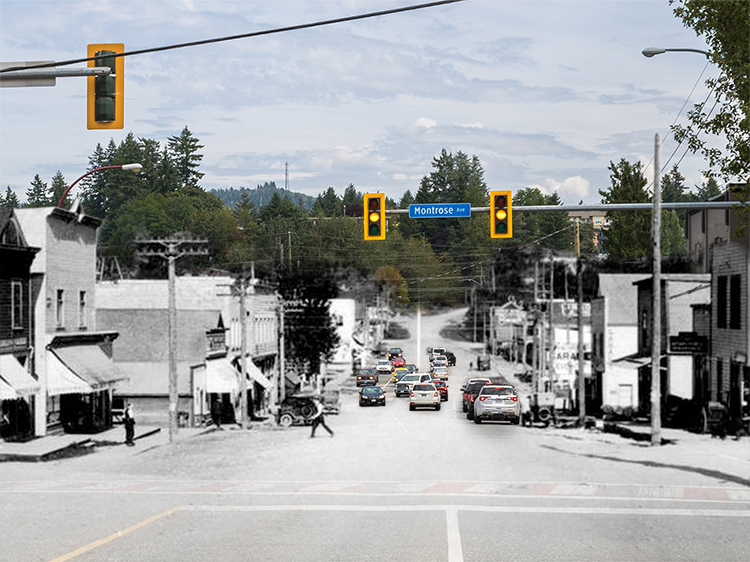Partner City
Vancouver
Canada's Pacific Gateway
At the southwestern corner of mainland British Columbia, the land around what would become Vancouver has been inhabited by First Nations peoples for thousands of years. The first European settlers arrived in the 1860s and erected sawmills to begin clearing the thick evergreen forests around Vancouver's deep harbour. In 1886 the town was made the western terminus of the Canadian Pacific Railway and the city began a massive building boom, which was not hindered by the devastating Great Fire that same year. Vancouver quickly became the economic metropolis for British Columbia's vast resource-rich hinterland. Today the city is the economic and cultural heart of the province, and over half of British Columbians live in and around Vancouver.
This project is a partnership with the Downtown Vancouver Business Improvement Association.
We respectfully acknowledge that Vancouver is on the unceded territory of the Coast Salish Peoples, including the territories of the Musqueam, Skwxwú7mesh (Squamish), and Tsleil-Waututh Nations.
Virtual Tours
Tours
Architecture
A Tale Told in Wood, Brick and Steel
Triumph of the Automobile
How Cars Conquered Vancouver
Chinatown
Resilience in the Face of Adversity
Stories of Granville Street
The Street at Centre Stage
The Great Fire of Vancouver
When Vancouver was Destroyed
Practicing for D-Day
Experiencing an Amphibious Assault
Vancouver's Japanese Canadian Community
The Tragedy of Little Tokyo
The Lifeguard Joe Fortes
Vancouver's Unlikely Hero
Real Estate Speculation
A City Built on Property Values
Stanley Park's Seawall
The Jewel of Vancouver
Skylines
Poetic Reflections on Vancouver
Vanished Vancouver
The City's Lost Architectural Legacy
Explore
Vancouver
Then and Now Photos
From Burrard Bridge
Vancouver Archives AM1545-S3-: CVA 586-682
1941
A view of war-time industrial False Creek taken from the Burrard Street Bridge. You can see on Granville Island at the right many of the original warehouses remain. The Kitsilano train trestle in the foreground once connected the rail yards of Yaletown with the Arbutus Corridor.
Misty Coal Harbour
Vancouver Archives AM336-S3-2-: CVA 677-183
1887
A view of Deadman's Island and Stanley Park shrouded in smoke and mist.
Off to the Klondike
Vancouver Archives AM54-S4-: Str P336
1898
A huge crowd has assembled in front of Johnston and Kerfoot's Klondike Outfitters to see a mule train equipped for the arduous journey to the gold fields. As tens of thousands of American prospectors made their way north, the prohibitive customs duties on bringing supplies across the border meant that most stopped in Vancouver to kit out. As a result the gold rush was a huge economic boon for Vancouver and marked the start of Vancouver's most dizzying expansion which would last until 1913.
Red Cross Brewery
Vancouver Archives AM54-S4-: Bu P128
1890
Carts decked out in bunting to advertise beer from the Red Cross Brewery on Cordova Street. The sign advertises "IPA, Pale, Lager... The Pearl of the Coast... Brewed only from pure malt and hops." Sounds like a beer advertisement one might see today.
Hays and McIntosh Butchers
Vancouver Archives AM54-S4-: Bu P551
1890
A group portrait at the entrance to the Hays and McIntosh Butcher Shop on Cordova Street.
Dirt Road Georgia
Vancouver Archives AM54-S4-: Ch P67
1899
Christ Church Cathedral seen from across a dirt-road Georgia Street. One wonders what the man on the sidewalk would make of this place if he could be transported to the present and see the buildings of steel and glass that tower over the church today.
The Carnegie Library
Vancouver Archives AM336-S3-3-: CVA 677-651
1900s
Looking west on Hastings, you can see the Carnegie Library that has recently been completed. The library was paid for by the industrialist Andrew Carnegie, a billionaire philanthropist who funded the construction of libraries all over the Western world.
Narrows at Low Tide
Vancouver Archives AM336-S3-2-: CVA 677-477
1900s
A small ship passes through the narrows and into Vancouver harbour. To the right, you can see that the Stanley Park seawall has not been built yet, but a gazebo can be seen.
The Highlanders' Bandmaster
Vancouver Archives AM54-S4-: LGN 525
1913
Bandmaster Slatter of Vancouver's Seaforth Highlanders regiment poses for a photo on the steps of the courthouse (now art gallery). In the background can be seen the old Hotel Vancouver, which has since been demolished.
HMS New Zealand
Vancouver Archives AM358-S1---: CVA 152-10.05
1913
The battlecruiser HMS New Zealand visiting Vancouver as part of a tour of the British Empire. Part of the Royal Navy but funded by New Zealand, the battlecruiser returned to Britain in time for the First World War and took part in all the major naval engagements between big-gun ships, including the Battles of Dogger Bank and Jutland.
An Overturned Engine
Vancouver Archives COV-S632-: CVA 789-35
1914
An engine, perhaps a horse-drawn fire engine, has toppled over. A crowd has formed as a couple policemen look on. The buildings at far left and right survive in this shot.
A Column on Georgia
Vancouver Archives AM54-S4-: Mil P93
1916
Soldiers with their gear march up Georgia Street towards Seymour in the early years of the First World War. The lack of crowds and dress uniforms indicates they are not part of a formal parade or departing for the front, but likely engaging in a training exercise. In all likelihood however they would be sent to the battlefields of France as soon as they were deemed ready for combat.
Artillerymen on Parade
Vancouver Archives AM1535-: CVA 99-476
1916
Weapon teams from the 68th Battalion of the Canadian Field Artillery are on parade down Hastings, passing in front of Victory Square.
Architectural Landmarks
Vancouver Archives AM336-S3-2-: CVA 677-969
1917
The second Hotel Vancouver stands behind the courthouse (now art gallery) in this photo taken from Robson Street.
Japanese Cenotaph
Vancouver Archives AM54-S4-: Mon P9
1920
The memorial cenotaph in Stanley Park for the Japanese-Canadians who had fallen fighting for Canada in the First World War.
The Seven Sisters
Vancouver Archives AM54-S4-: St Pk P76.2
1920s
The trees that once grew from these stumps were called the Seven Sisters. The six douglas firs and a red cedar were thought to be over 700 years old and from the park's earliest days they impressed visitors with their magnificent size. The iconic Canadian poet Pauline Johnson called them the "Cathedral trees" and said "There is no fresco that can rival the delicacy of lace-work they have festooned between you and the far skies." There are several stories about how they got their name. According to one, published in an article in the Vancouver Daily Province in 1949, when Lord Stanley opened Stanley Park in 1889 there were only seven girls between the ages of 10 and 18 in the city's 1,000 odd residents, and this was their favourite spot to play. Hence the Seven Sisters. By the 1960s they had died, and it was feared they would fall and injure someone so they were cut down.
Changing Granville
Vancouver Archives AM54-S4-2-: CVA 371-820
1920s
The several buildings in this photo, the apartment block in front, the opera house in the middle, and the second Hotel Vancouver at the end of block, are all gone now. Before World War I yhey helped anchor the city around this part of town, as you can see by the busy street-scene.
Kuomintang Building
Vancouver Archives AM1535-: CVA 99 - 3202
1920s
The headquarters of the Kuomintang survives till today. The recessed balcony on the top floor marks it out as a Chinese-style building, though this has since been removed and filled in. It's a shame the cupola at the top has not survived.
Friends at the Beach
Vancouver Archives AM1559-: CVA 258-3
1923
These women, wives of CPR men, seem to be enjoying a day at the beach, having just come out of the water. The long pier at the back is obviously no longer there, though the rocks underpinning it are.
Japanese Cruisers
Vancouver Archives AM358-S1-: CVA 152-37
1925
Three Japanese cruisers on a port visit to Vancouver in 1925, a time when Japan and Britain (and Canada) were still allies. These ships would be used in the war against the Allies only 15 years later.
Japanese Cruisers (2)
Vancouver Archives AM358-S1-: CVA 152-39
1925
Three Japanese cruisers on a port visit to Vancouver in 1925, a time when Japan and Britain (and Canada) were still allies. These ships would be used in the war against the Allies only 15 years later.
Vancouver's Waterfront
Vancouver Archives AM54-S4-2-: CVA 371-831
1929
Several passenger steamers are docked at the CPR docks on Vancouver's waterfront. A number of prominent buildings are visible, such as the second Hotel Vancouver (far right, now demolished), the Vancouver block (with the white clock tower at right), the Birks Block (just in front of the Vancouver Block, now demolished) and the Post Office (centre right, above the steamship docks).
Ships Passing at Sunset
Vancouver Archives AM54-S4-2-: CVA 371-1462
1930s
Two ships pass each other at the entrance to Vancouver harbour in this rather moody shot from the 1930s.
Crossing the Bridge
Vancouver Archives AM1535-: CVA 99-2656
1932
Crowds walk across the freshly completed Burrard Street Bridge for the first time. The bridge is fairly unique for the Art Deco design of the superstructure, a style of building that flourished in the 1920s and 1930s that sought to combine modern technology and science with careful attention to detail and beauty. You can learn more about Art Deco in the Architecture Tour.
Ferrara Court
Vancouver Archives AM54-S4-1---: CVA 20-52
1932
This photo gives a look at the many advertisements always present in Vancouver. The most common advertisements in old photos by far are for cigarettes and real estate agents. The second building at the left has an ad for MILLBANK Virginia Cigarettes.
Building the Lions Gate
Vancouver Archives AM54-S4-: Br P81.26
1938
Work is beginning on installing the bridge deck on the Lions Gate bridge.
Industrial Operations
Vancouver Archives AM640-S1-: CVA 260-1040
1939
A sawmill belches smoke on a tranquil looking False Creek. It is evident that this stands where the casino stands today because the new city hall on Cambie can be seen dominating the skyline in the background. Today it is partially obscured by the growing number of condo towers, though they are both lined up.
Captain Vancouver
Vancouver Archives AM1545-S3-: CVA 586-164
1940
The statue of Captain George Vancouver looks out over the city that bears his name. He would probably be quite pleased at this outcome, as his name was only picked after Gastown and then Granville were thought unsuitable. It was actually CPR President Van Horne who suggested the name. Granville, a former colonial secretary, didn't have the same ring to it as the intrepid explorer whose voyages to the Pacific were known to every school-child in Britain. Van Horne wanted a name people would remember and advertise the city. Since the CPR basically controlled the city, Van Horne got his way.
Court House From Robson
Vancouver Archives AM1545-S3-: CVA 586-4159
1945
The courthouse, now the art gallery, and beyond it the Hotel Vancouver, can be seen in this foggy photo taken from Robson Street.
Homecoming Parade
Vancouver Archives AM1545-S3-: CVA 586-4035
1945
The Seaforth Highlanders march past a reviewing stand in front of the Hotel Georgia to celebrate their return from Europe at the end of the Second World War.
Granville Strip in the 60s
Vancouver Archives COV-S511---: CVA 780-55
1967
A busy Granville strip and so-called Theatre Row. Standing at the same spot today you'll see how little has changed in the last 60 years, save the makes of the cars and the fashion choices of the pedestrians.

